In this educational cooking tip live blog post, Prepping Sweet Peppers, you'll learn essential techniques for handling and preparing sweet peppers like a pro. From selecting the freshest peppers at the market to efficiently deseeding and slicing them, this will guide you through every step with easy-to-follow instructions on prepping sweet peppers.
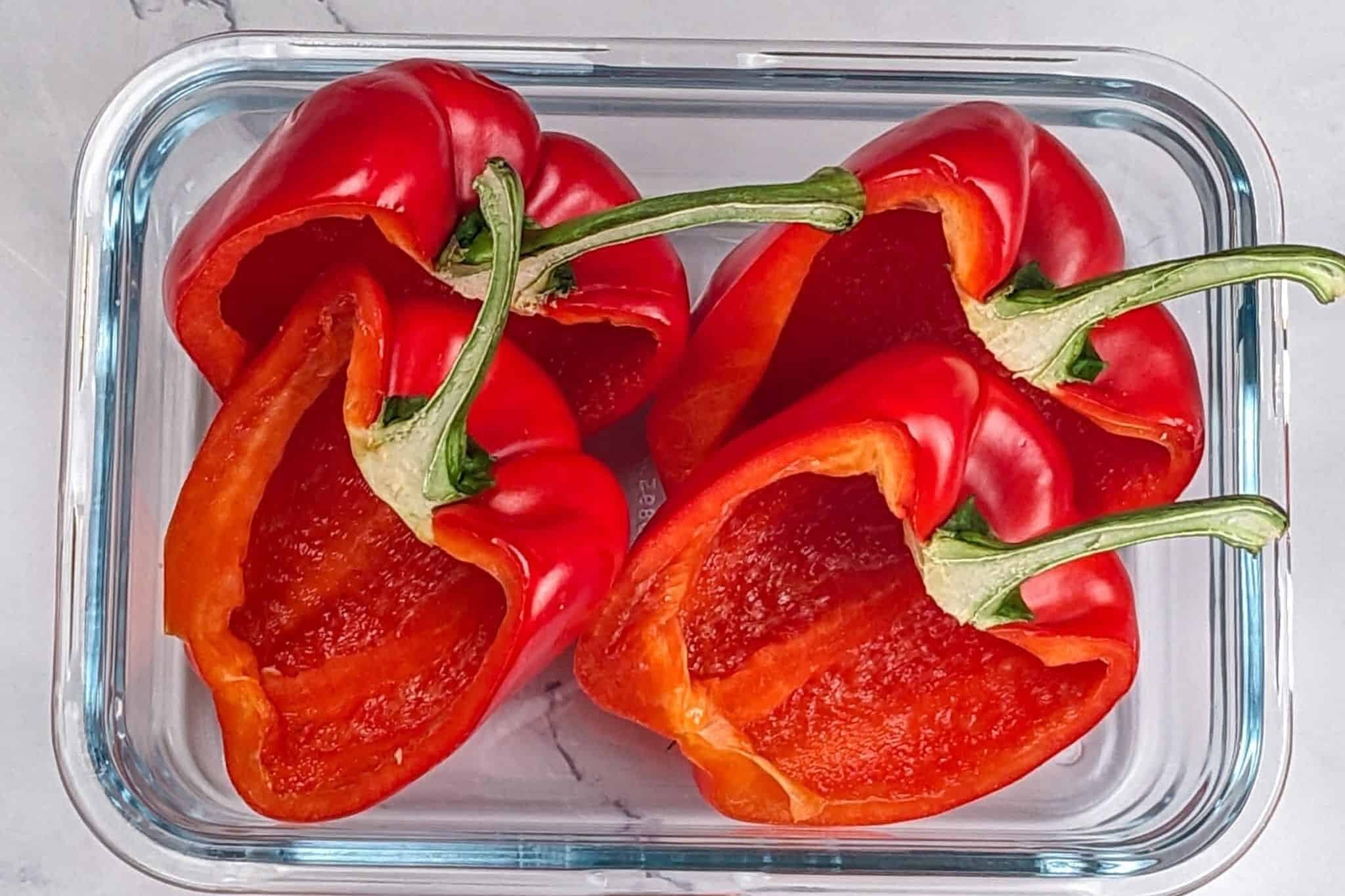
Table of Contents
Jump to:
- Sweet Peppers: An Essential Ingredient
- Choosing the Perfect Sweet Peppers
- Essential Nutrients
- Prepping Sweet Peppers: Step-by-Step Guide
- How to Remove Seeds and Pith (Pictures)
- How to Small Dice (Video)
- How to Small Dice for Presentation (Pictures)
- How to Cut Peppers for Stuffing (Video & Pictures)
- How to Large Dice (Video)
- Recipe Ideas
- Frequently Asked Questions
- Essentials of Learning How to Prep
- Questions and Comments
Whether you're looking to enhance your meal prep routine or simply elevate the flavors in your dishes, this post on prepping sweet peppers will provide you with the knowledge and confidence to make the most out of these vibrant, versatile vegetables.
Sweet Peppers: An Essential Ingredient
Sweet peppers are a staple in kitchens around the world, valued not only for their vibrant colors but also for their ability to elevate the flavor profile of countless dishes. In many cultures, including my own Haitian heritage, sweet peppers play a crucial role in traditional cooking.
For instance, they are a key ingredient in the preparation of "epis" or green seasoning—a flavorful blend that forms the foundation of many Haitian dishes. This practice, rooted in West African culinary traditions, is similar to the preparation of Ata Gige and Ata Lilo in Nigeria and Senegal, which serve as essential bases for dishes like Jollof rice.
Properly prepping sweet peppers not only enhances their flavor but also saves time in the kitchen, ensuring that your dishes are rich, aromatic, and delicious. In this post, you'll learn how to select, clean, and prep sweet peppers efficiently, allowing you to make the most of this versatile ingredient in your cooking.
Whether you're making a quick stir-fry, a hearty stew, or a vibrant salad, mastering these techniques will add depth and convenience to your culinary repertoire.
More Cooking Tips
- How to Prep Chicken Cutlets for Quick, Delicious Meals
- Understanding Food Temperature Safety Zones: Cook, Store & Serve Safely
- How to Butterfly Chicken Breasts | Step-by-Step Guide
- 10 Proven Spice‑Storage Hacks (Stop Wasting Flavor)
Choosing the Perfect Sweet Peppers
Selecting the perfect sweet peppers is key to ensuring your dishes are flavorful and vibrant, so it's important to know what to look for when selecting these versatile vegetables. Understanding the different varieties of sweet peppers is essential for achieving the desired flavor and texture in your recipes.
Each type of sweet pepper brings its own unique flavor, color, and level of sweetness, making it important to select the right variety that suits your specific culinary needs.
Tips for Selecting Fresh Peppers
Learn how to pick the freshest sweet peppers by looking for vibrant color, smooth texture, and firm stems to ensure top quality and great flavor in your dishes.
What to look for in terms of color, texture, and firmness?
First, when selecting fresh sweet peppers at your local grocery store, start by examining the color. Look for vibrant, rich hues that indicate ripeness—whether red, yellow, orange, or green. Avoid dull or uneven coloring peppers, as this may suggest they are either underripe or overripe.
The texture of the pepper’s skin should be smooth and shiny, with no wrinkles or soft spots. Firmness is key: a fresh, sweet pepper should feel solid and have a slight give when gently squeezed, but it should not be mushy or have areas that feel too soft.
Signs of freshness and quality
Signs of freshness and quality also include the pepper’s stem, which should be green and firm. A dry, browning, or shriveled stem can be a sign that the pepper is past its prime. Additionally, check the pepper for any signs of blemishes, cuts, or bruises, as these can indicate damage or decay.
If you’re selecting pre-packaged peppers, ensure no moisture or condensation is inside the packaging, as this can lead to mold growth and spoilage. These tips will help you choose the freshest, highest-quality sweet peppers for your cooking.
Common Sweet Pepper Varieties
Learn about the most popular sweet pepper varieties, from versatile bell peppers to tangy banana peppers, each offering unique flavors and textures perfect for a variety of dishes.
- Bell Peppers - There are different colors of bell peppers, the most popular and versatile variety, bell peppers come in a range of colors, including green, red, yellow, and orange. Green bell peppers are slightly bitter and less sweet, while red, yellow, and orange varieties are sweeter and more mellow. Bell peppers are commonly used in salads, stir-fries, stuffed pepper recipes, and as a crunchy addition to sandwiches.
- Cubanelle Peppers - These long, tapered peppers are mild and slightly sweet, with a thinner skin than bell peppers. Cubanelle peppers are often used in sautéed dishes, especially in Italian and Spanish cuisines, and they make a great addition to pizzas, sandwiches, and light stews.
- Banana Peppers - Banana peppers have a tangy, mild flavor with a slight sweetness. They are often pickled and used as a topping for pizzas, salads, and sandwiches, adding a bright, zesty note to dishes.
- Mini Sweet Peppers (Mini Bell Peppers) - These small, colorful peppers are sweet and crunchy, making them perfect for snacking, roasting, or adding to salads. Their vibrant appearance and bite-sized shape also make them ideal for appetizers and party platters.

Flavor Profiles and Uses in Different Cuisines
Sweet peppers are a globally cherished ingredient, adding sweetness, color, and depth to dishes across various cuisines. Below, you will find how it is used in the United States, the Caribbean, Latin America, Africa, Asia, and Europe. No matter the region, sweet peppers are a culinary staple that enhances flavor and presentation in countless dishes.
United States (Typical American Cuisine)
In American cuisine, bell peppers are a go-to ingredient for various dishes. Their versatility makes them ideal for everything from raw salads to grilled kebabs.
Red and yellow bell peppers, with their sweeter flavor, are often preferred in recipes with a subtle sweetness, such as roasted vegetable medleys or stuffed peppers, like the Healthy Spicy Ground Turkey Stuffed Peppers recipe.
Green bell peppers, with their slightly bitter edge, are frequently used in dishes like gumbo or chili, where they add a deeper, more complex flavor.
Caribbean Cuisine
In Caribbean cooking, sweet peppers, particularly green bell peppers, are a fundamental ingredient in seasoning blends like "epis" in Haitian cuisine. This green seasoning, made with a blend of herbs, garlic, and peppers, is used to marinate meats, add flavor to rice dishes, and create the base for many stews and soups.
Sweet peppers in Caribbean cuisine often involve combining them with spicy elements like scotch bonnet peppers, creating a harmonious balance of sweetness and heat. This cooking process originated in West African cooking (e.g., Nigerian's Ata Gige- See 'African Cuisine' below for more explanation).
Latino Cuisine
In Latin American cuisine, sweet peppers like cubanelles and bell peppers are integral to dishes such as sofrito—a fragrant cooking base used in Puerto Rican, Cuban, and Dominican cooking.
The mild sweetness of these peppers complements the bold flavors of garlic, onions, and cilantro, forming the foundation for many stews, rice dishes, and beans. Bell peppers, especially red and yellow, are also commonly used in salsas, ceviches, and fajitas, adding color and sweetness to the dishes.
African Cuisine (North and West)
In North African cuisine, particularly in Moroccan cooking, sweet peppers are often roasted and paired with spices like cumin and paprika to create flavorful salads and tagines. The smoky sweetness of roasted peppers enhances the complex flavors of these dishes.
In West African cuisine, sweet peppers are an essential ingredient in "Ata Lilo" and "Ata Gige," which are used as bases for many traditional dishes, including Jollof rice. The combination of sweet peppers with spicy chilies and tomatoes creates a rich, savory sauce that is a cornerstone of West African cooking.
Ata Gige is a Nigerian red pepper paste made from blended red bell peppers, onions, garlic, ginger, and scotch bonnet peppers, is the base for Ata Lilo, which is more blended with the addition of tomatoes, used as a key base for various stews, soups, and rice dishes in Nigerian cuisines, like Jollof.
Additionally, this cooking process inspired the development of the Spicy Shrimp Farro Risotto with Mushrooms and Peas recipe; visit the link to learn more about Nigerian cuisine.
Asian Cuisine (Chinese to Thai)
In Chinese cuisine, bell peppers are often stir-fried with meats and other vegetables, where their sweetness balances the savory and umami flavors typical of Chinese sauces like soy sauce and oyster sauce.
In Thai cuisine, sweet peppers are used in curries and stir-fries, adding a layer of sweetness that complements the heat of chili peppers and the richness of coconut milk.
Thai dishes often feature red and yellow peppers for their sweetness and color, enhancing the overall visual appeal and flavor complexity. Check out the Chinese-inspired recipe: Chicken Stir-Fry with Mushrooms, Peppers, and Green Beans in Hoisin Sauce.
European Cuisine
- In Mediterranean and European cooking, sweet peppers, especially red bell peppers, are frequently roasted to bring out their natural sweetness and incorporated into dishes like ratatouille, gazpacho, and various antipasti.
- In Italian cuisine, cubanelle peppers are commonly sautéed with onions and tomatoes to create a flavorful base for sauces and pizzas.
- In Spanish cuisine, bell peppers are a key component of paella, adding sweetness and depth to the dish. Roasted red peppers are also a popular ingredient in spreads and sauces like romesco. For example, check out the Grilled Tofu with Vegetable Pearl Couscous Salad with Romesco recipe.
Essential Nutrients
Sweet bell peppers are versatile and delicious and packed with various essential nutrients that contribute to overall health and well-being. Unfortunately, when shopping, you will not see the nutrition information on your fresh produce. Here is a list of what to expect:
- Vitamin C - Bell peppers are especially rich in vitamin C, with red bell peppers containing the highest amount. Vitamin C is important for immune function, skin health, and the absorption of iron from plant-based foods.
- Vitamin A - Bell peppers, particularly red ones, are high in vitamin A, which is important for eye health, immune function, and skin health.
- Vitamin B6 - This vitamin plays a role in brain development and function and helps the body convert food into energy.
- Folate (Vitamin B9) - Folate is important for cell function and tissue growth, particularly for pregnant women. It is also known as folic acid.
- Fiber - Bell peppers are a good source of dietary fiber, which aids in digestion and helps maintain a healthy gut.
- Vitamin E - This antioxidant helps protect cells from damage and is important for skin health.
- Potassium - Potassium helps regulate fluid balance, muscle contractions, and nerve signals.
- Antioxidants - Bell peppers contain various antioxidants, including beta-carotene, lutein, and zeaxanthin, which are important for protecting the body from oxidative stress and promoting eye health.
- Low in Calories - Bell peppers are low in calories, making them a great option for those looking to manage their weight while getting a nutrient-dense food.
Prepping Sweet Peppers: Step-by-Step Guide
Prepping sweet peppers is an essential step to ensure they are ready to enhance the flavor and texture of your dishes.
In this step-by-step guide, we'll walk you through the process of washing and cleaning your peppers to remove dirt and residues, efficiently removing the seeds and core to minimize waste, mastering slicing and dicing techniques for different culinary needs, and properly storing prepped peppers to maintain their freshness and quality.
Washing and Cleaning
- Start by thoroughly washing your sweet peppers under cold running water to remove any dirt and potential pesticide residues.
- Gently rub the surface with your hands or use a soft vegetable brush to ensure all crevices are clean.
- For added cleanliness, you may opt to use a produce wash, which can help eliminate additional residues.
- After washing, pat the peppers dry with a clean towel to prevent any excess moisture from affecting your cutting process.
Veggie Wash Fruit and Vegetable Wash is a natural, plant-based cleaner designed to effectively remove dirt, wax, pesticides, and other residues from fresh produce. This 16-fluid-ounce bottle (Pack of 3) is ideal for cleaning a variety of fruits and vegetables, ensuring they are safe and ready to eat. Unlike simply rinsing with water, Veggie Wash uses naturally derived ingredients to break down and wash away contaminants while preserving the freshness and taste of your produce. It’s free from harsh chemicals, synthetic detergents, and preservatives, making it a great choice for health-conscious consumers who want cleaner, safer fruits and veggies for their meals.
Removing the Seeds and Core
To remove the seeds and core efficiently, consider using the top-down method. Learn more about how to remove the seeds and pith.
- Start by cutting off the top of the pepper where the stem is attached. This will reveal the cluster of seeds and core inside.
- You can then either reach in to pull out the core or use a knife to cut around it, carefully separating the seeds from the pepper’s flesh. To minimize waste, trim away as close to the core as possible, preserving as much of the pepper as possible.
Slicing and Dicing Techniques
How you cut your sweet peppers can vary depending on the dish you’re preparing. Learn cutting peppers techniques here.
- You might want to julienne or cut the peppers into thin strips for stir-fries or fajitas.
- For salads or salsas, dicing into small, uniform pieces works well.
Always use a sharp knife to make clean, precise cuts, and practice proper knife safety by keeping your fingers tucked under your guiding hand and maintaining a stable cutting surface. This ensures efficiency and keeps your fingers safe from accidental cuts.
My Rating: ⭐⭐⭐⭐⭐
Purchased: November 9, 2023
My Review: As a professional chef and culinary instructor, I rely on quality knives both at home and in my cooking classes. After purchasing the PAUDIN Santoku Knife and loving its performance, I decided to invest in the 7-Piece Chef Knife Set—and I’m so glad I did! These knives are lightweight yet incredibly sharp, making prep work effortless whether I’m dicing, slicing, or chopping. The high-carbon stainless steel blades hold their edge well, and the Pakkawood handles offer a comfortable, balanced grip for extended use. I’ve used this set in my instruction classes and home kitchen, and it consistently delivers precision and ease. If you're looking for a reliable, professional-quality knife set without breaking the bank, PAUDIN is a fantastic choice! I highly recommend it for home cooks and professionals alike!
Storing Prepped Peppers
Once your sweet peppers are prepped, store them properly to maintain their freshness.
- Shorter Storage - If you plan to use them within a few days, place the prepped peppers in an airtight container or a resealable plastic bag and store them in the refrigerator’s crisper drawer.
- Longer Storage - Freeze the peppers by laying them out in a single layer on a baking sheet to freeze individually before transferring them to a freezer-safe food storage zipper bag.
Prepped peppers stored in the fridge typically last up to 3-5 days, while frozen peppers can last several months. Watch for signs of spoilage, such as softening, discoloration, or a slimy texture, to ensure you use them at their best.
How to Remove Seeds and Pith (Pictures)
Before dicing or slicing sweet peppers, it’s important to remove the seeds and pith (the white membrane inside). These parts can add bitterness and affect the texture of your dish. The good news? It’s quick and easy to do with the right technique! In this section,
I’ll walk you through a simple method to clean your peppers efficiently—so you get perfectly prepped peppers every time. Let’s get started!
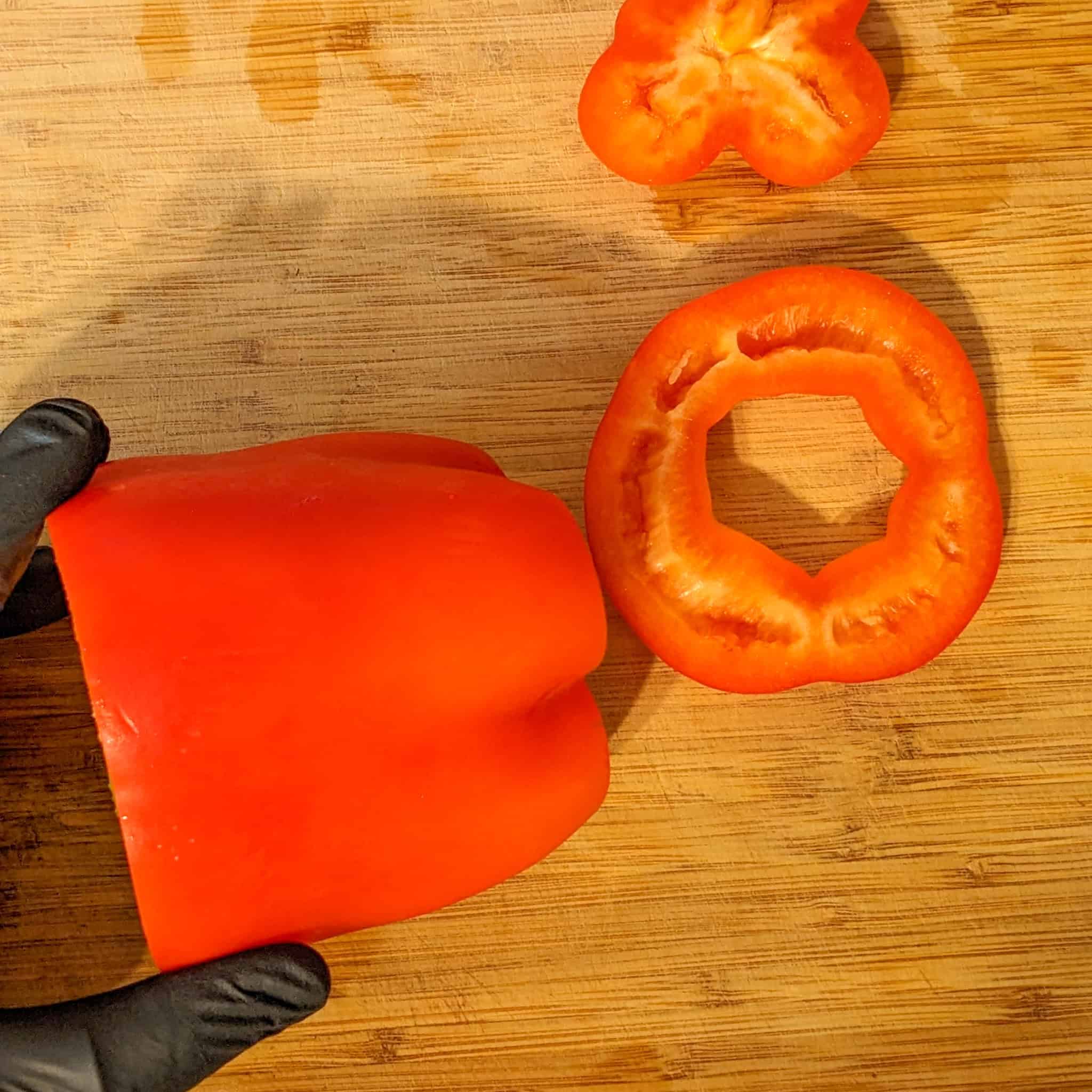
Remove the top and bottom.
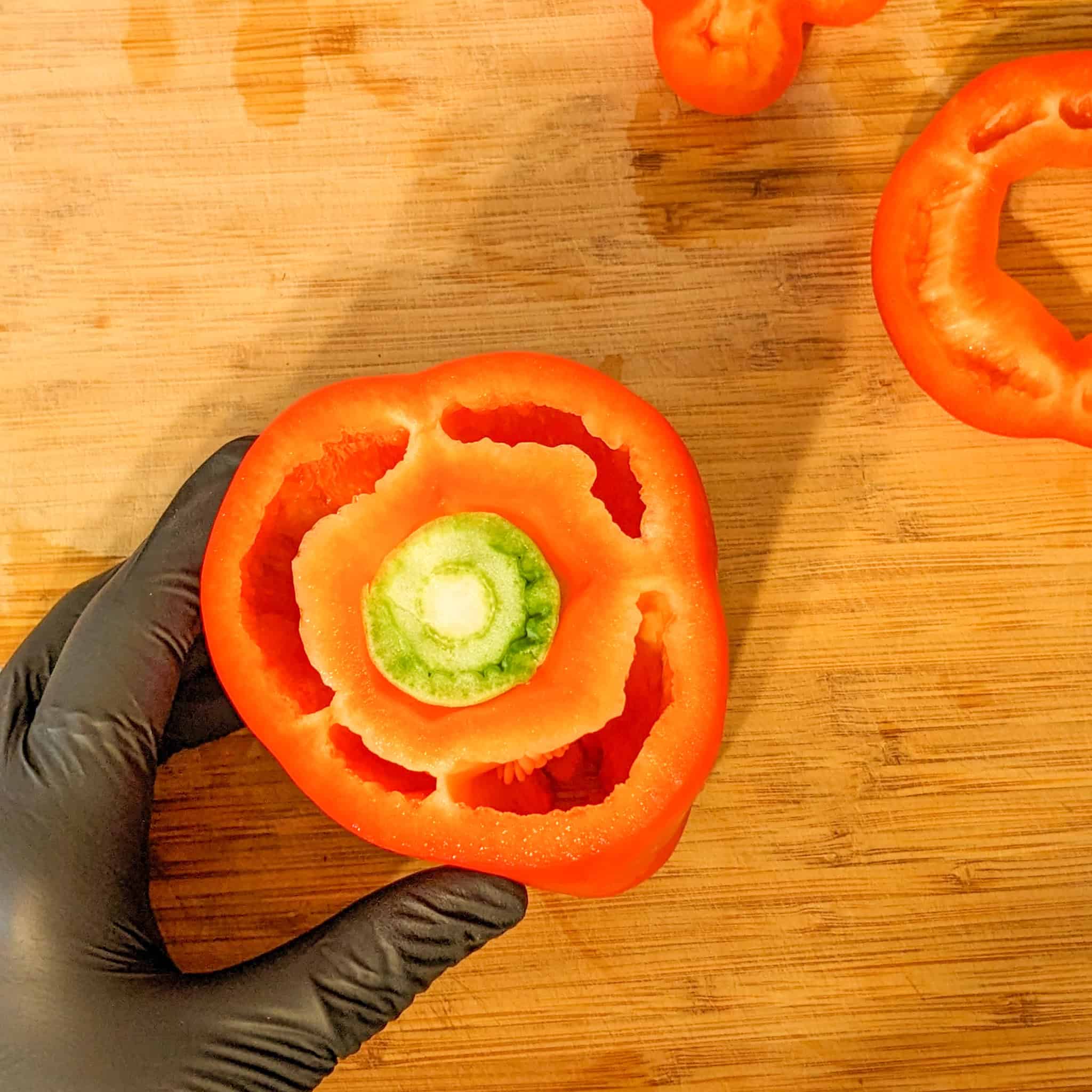
Stand the pepper upright vertically.
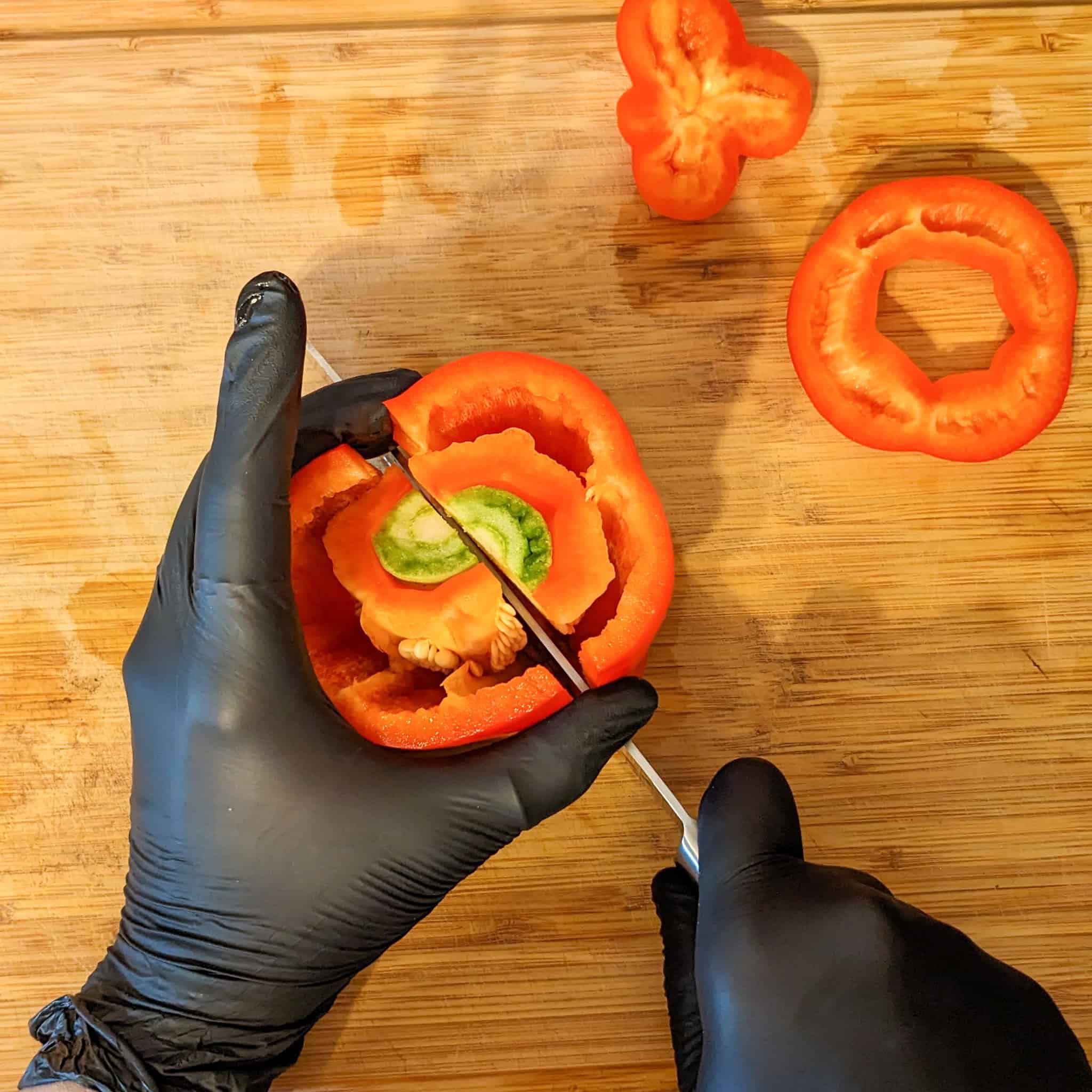
Divide it in half with a sharp knife.
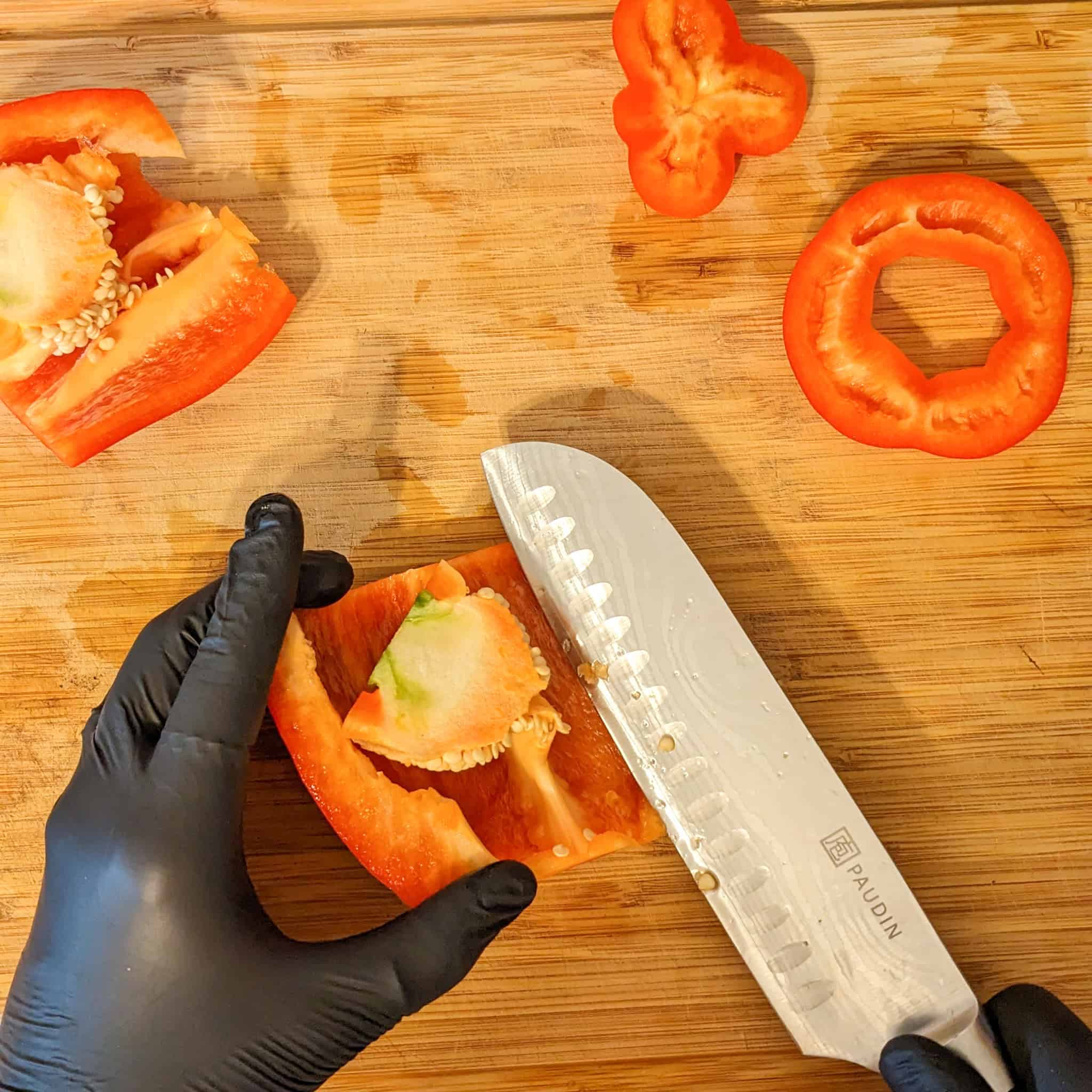
Cut along the top of the flesh to remove the pith and core.
My Rating: ⭐⭐⭐⭐⭐
Purchased: 10/17/21
Update: 08/19/24
My Review: This knife is well-made. Super solid and multi-functional. It is made with high-carbon steel, so it will not rust. Slicing meat like fish is easier with the grooves. It doesn’t stick to the knife. The handle has an excellent grip, and it's not heavy. For some background, a Santoku is a versatile Japanese kitchen knife characterized by its straight edge and "sheepsfoot" blade, designed for slicing, dicing, and chopping with precision. Its name means "three virtues," referring to its ability to handle meat, fish, and vegetables efficiently, making it a staple in both professional and home kitchens.
How to Small Dice (Video)
Are you whipping up a stir-fry, stuffing tacos, or adding peppers to a flavorful sofrito? Learning this technique will improve your cooking. Getting perfectly uniform small diced bell peppers is essential for sauces, salsas, and finely textured dishes.
In this quick tutorial, I’ll show you how to small dice bell peppers, making your prep work easier and more efficient. Watch the video below to see how it’s done step by step!
How to Small Dice for Presentation (Pictures)
Small dicing bell peppers involves using precise knife skills to cut the pepper into uniform, small cubes, which not only ensures even cooking but also enhances the visual presentation of your dish. Learn how to remove the seeds and pitch.
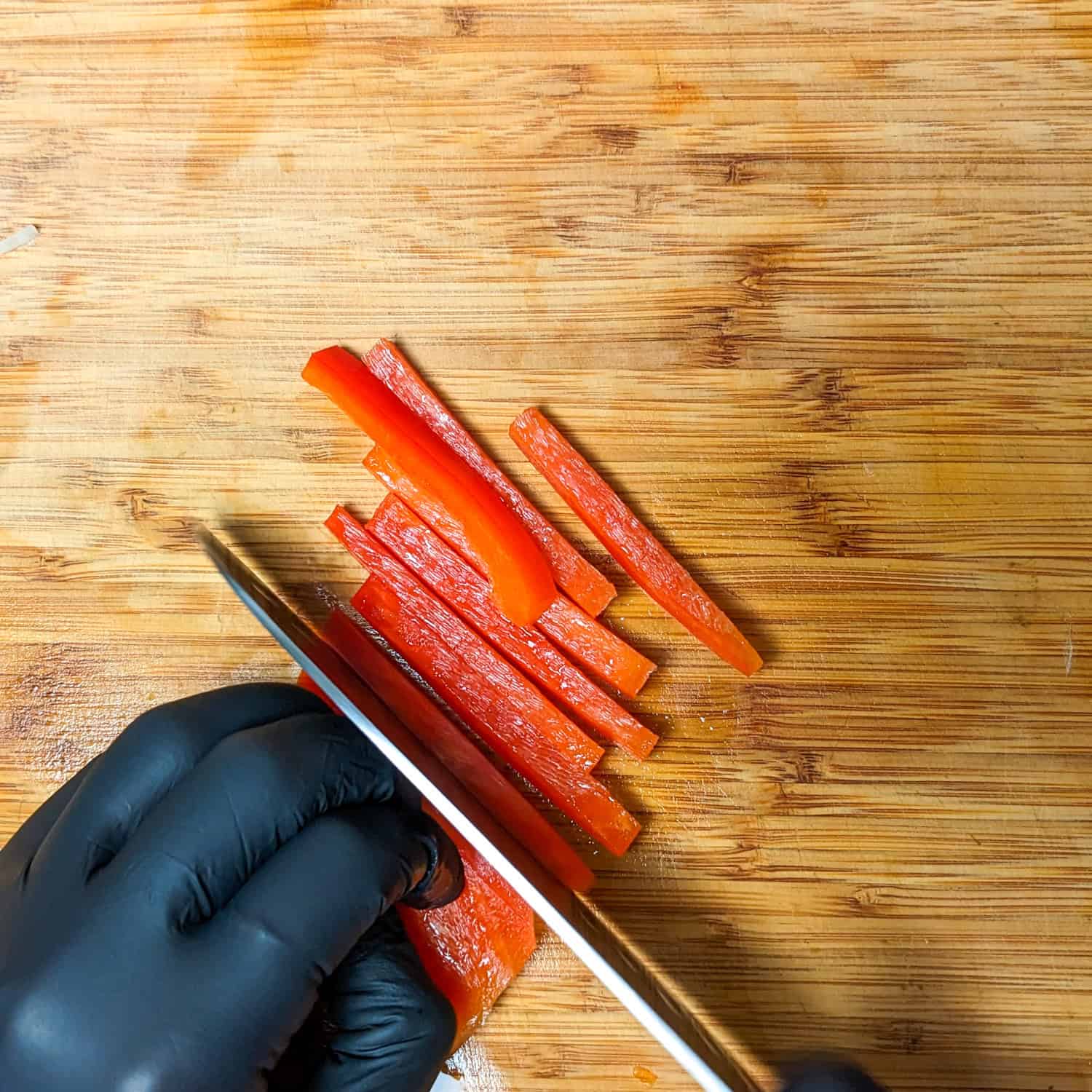
The top and bottom of the bell pepper are cut off. Then, run the knife along the inside to remove all of the white pith.
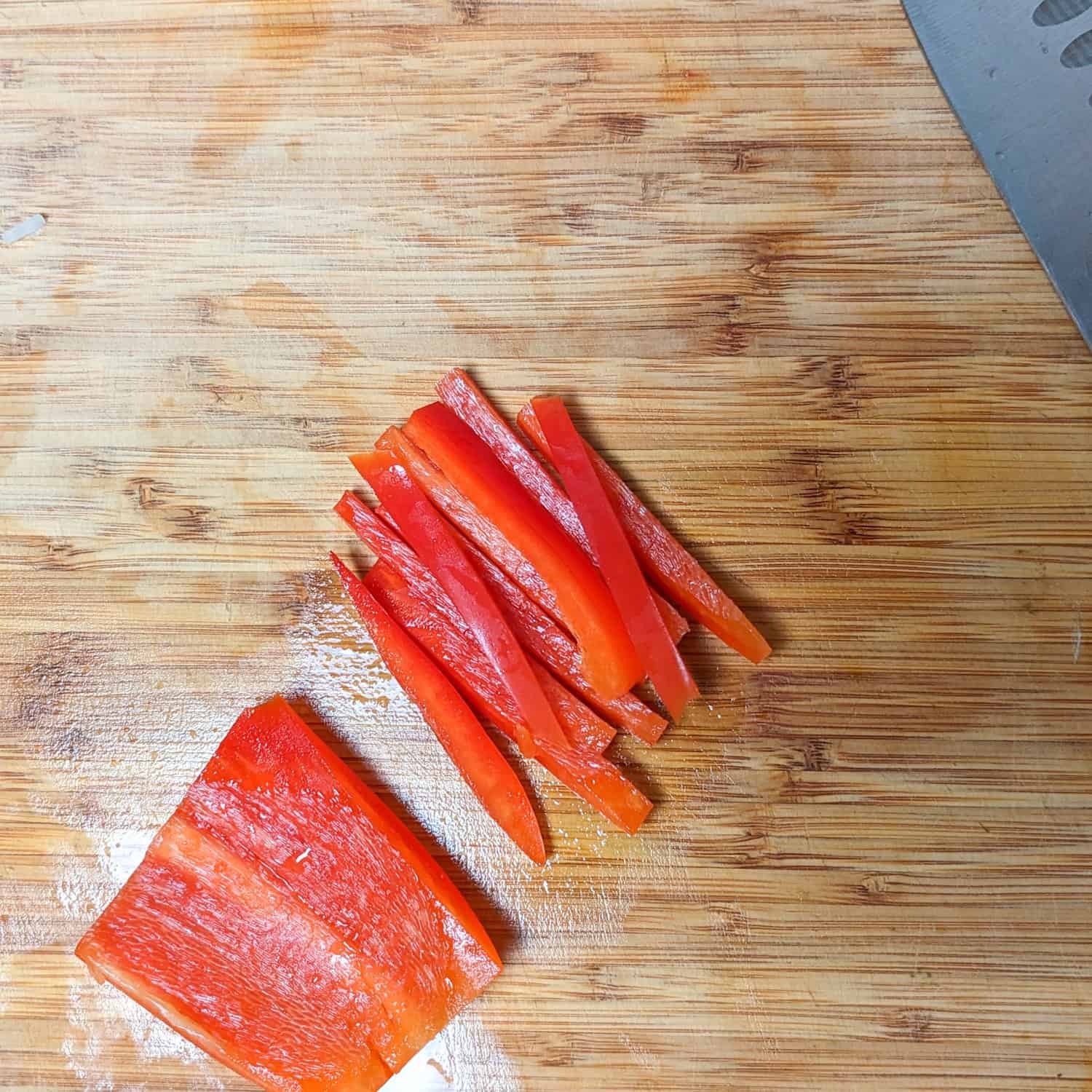
Cut the pepper into strips (batonnets).
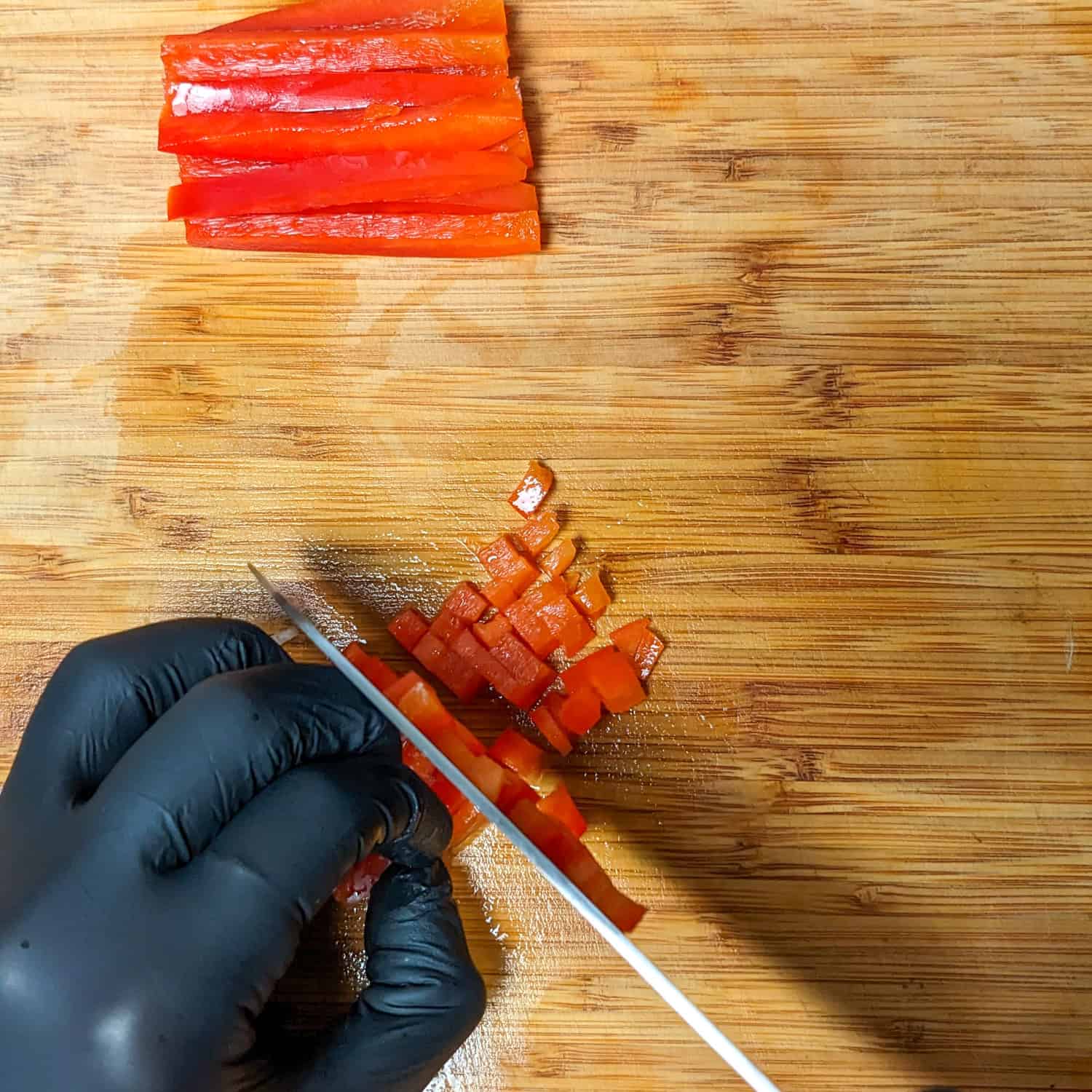
Dice the peppers into even small squares.
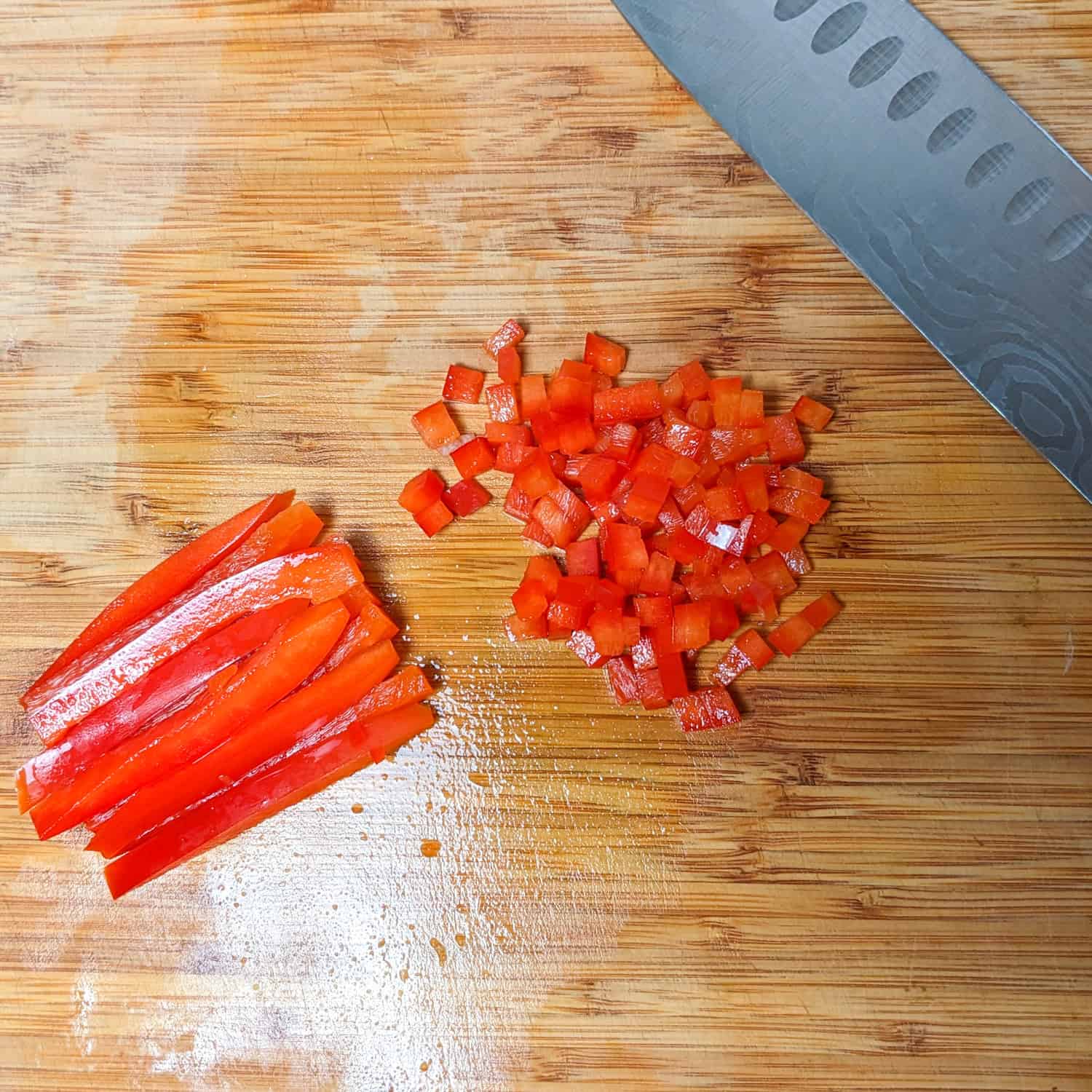
Uniform strips will create a uniform dice.
How to Cut Peppers for Stuffing (Video & Pictures)
Stuffed peppers are a delicious and versatile dish, but cutting them correctly ensures they hold their shape and cook evenly. In this guide, I’ll show you how to prep bell peppers for stuffing, whether you prefer cutting them in half for easy servings or coring them whole for a classic presentation.
Watch the video and follow the step-by-step pictures to get perfectly prepped peppers every time!
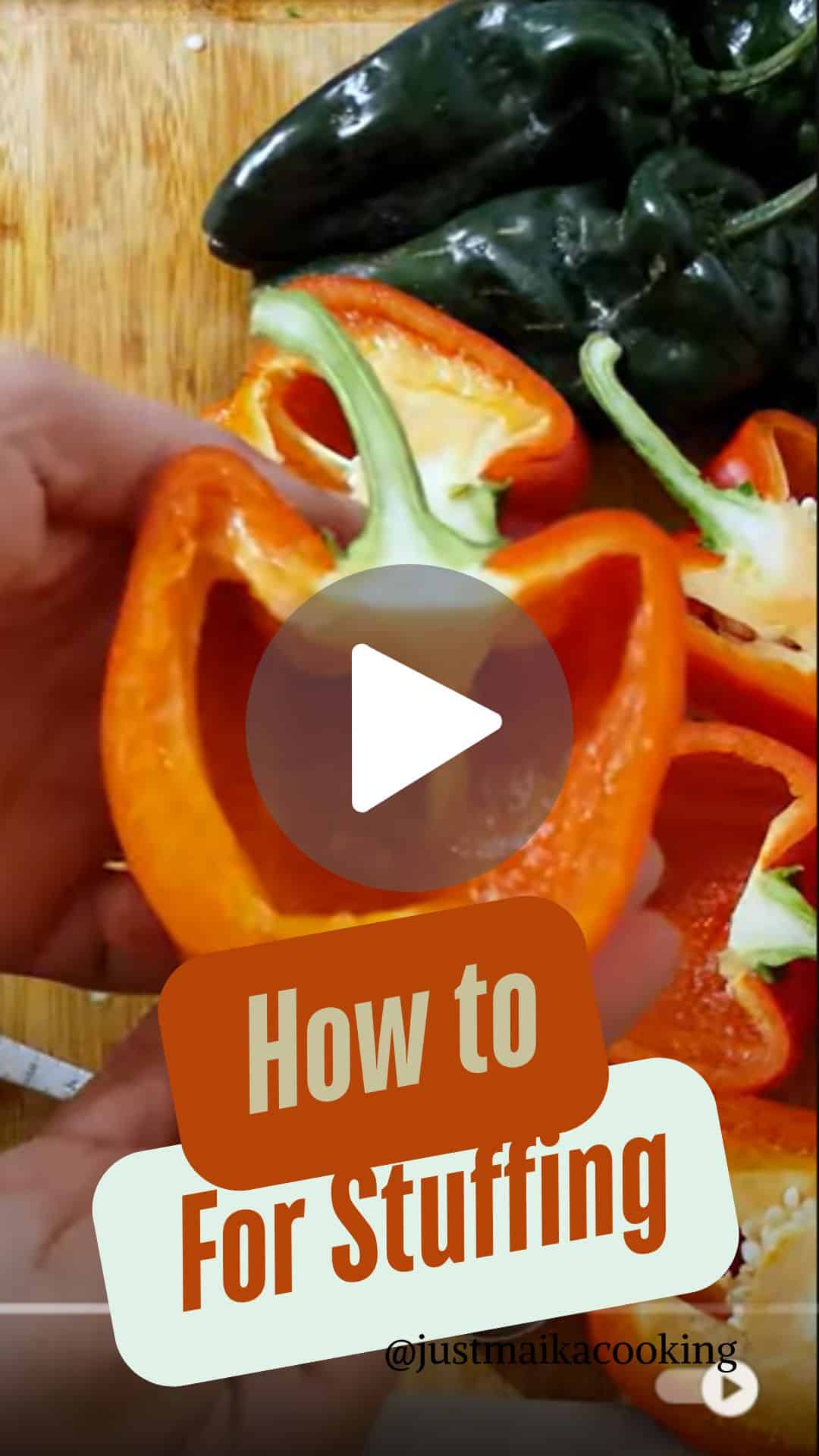
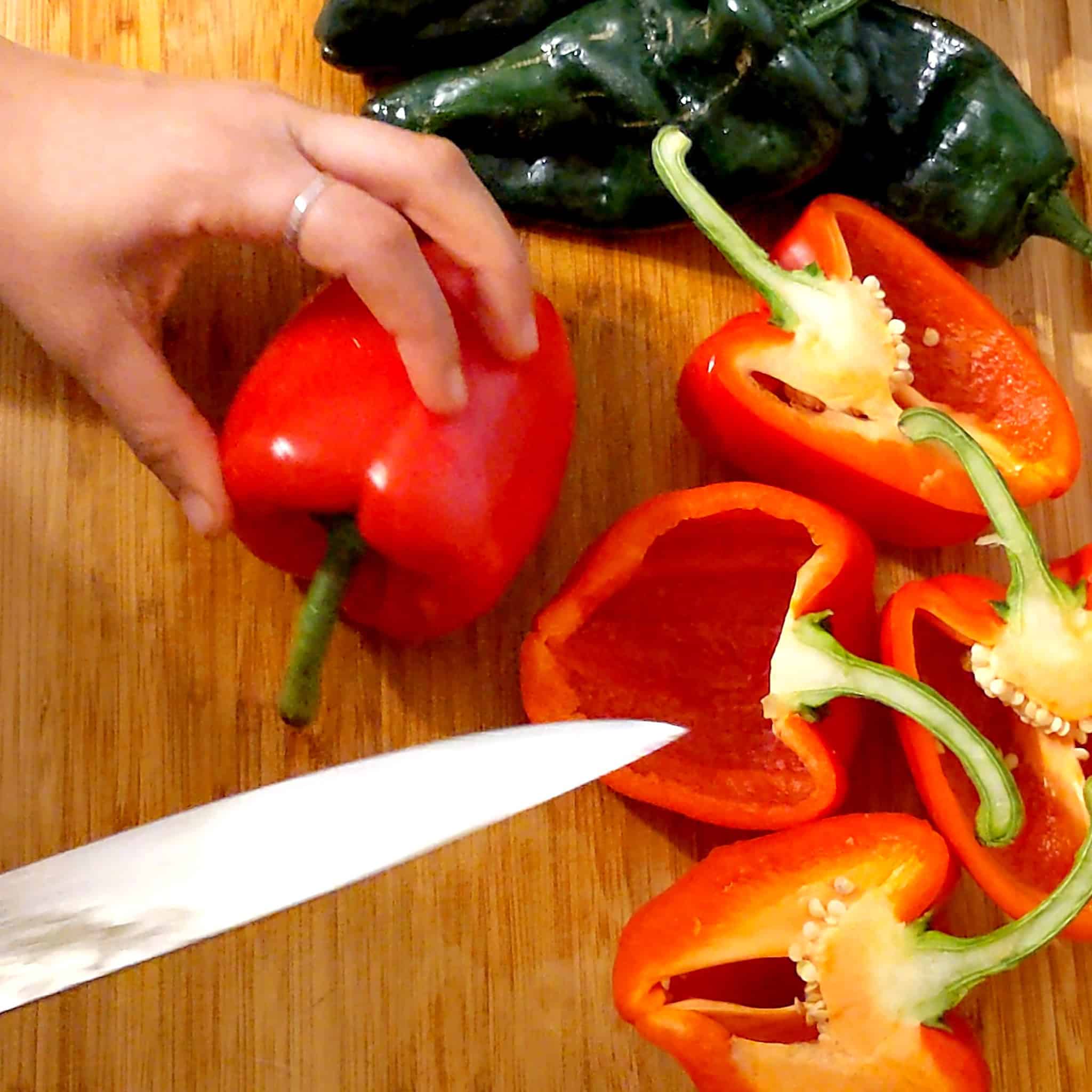
Use a sharp, pointy knife.
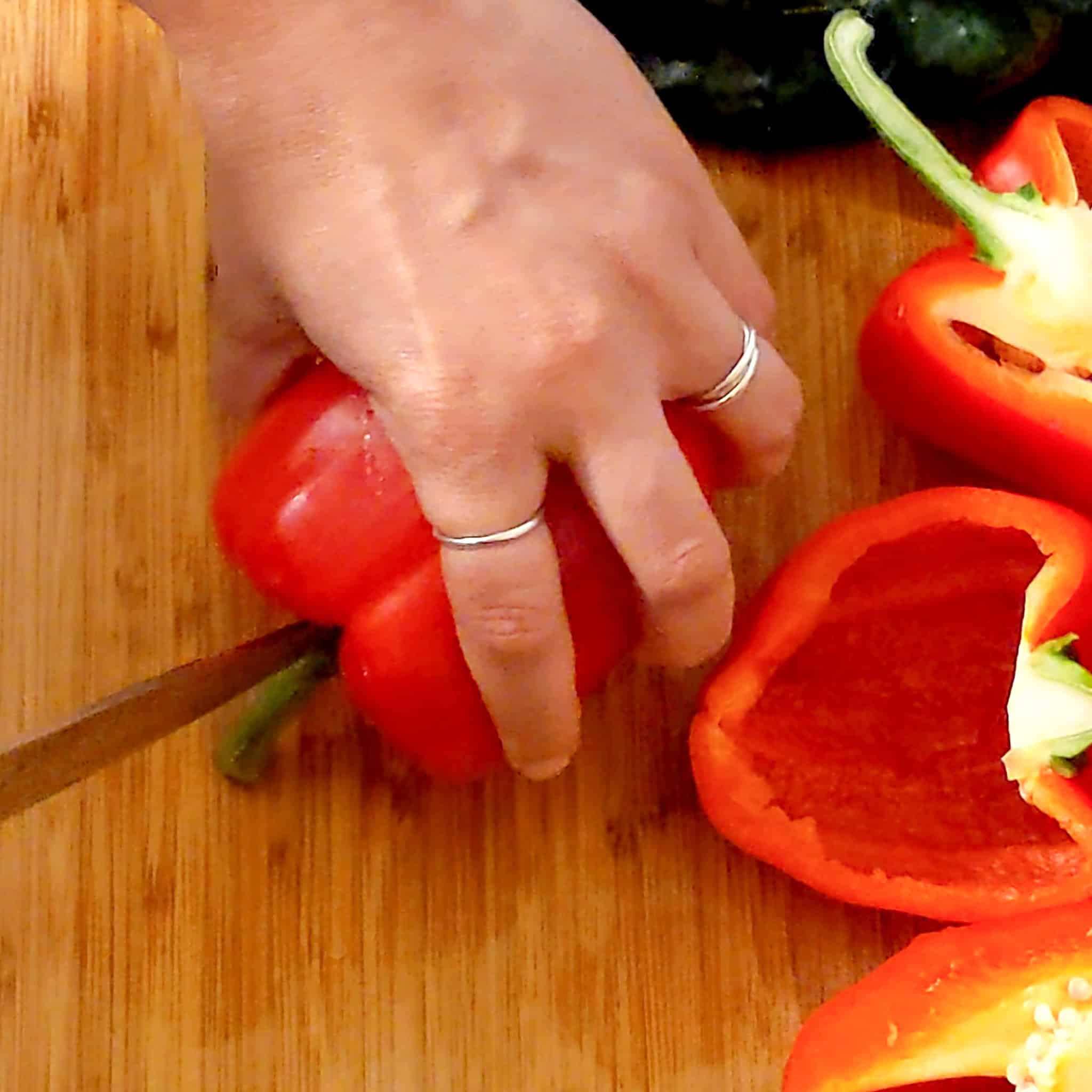
Start at the base of the stem.
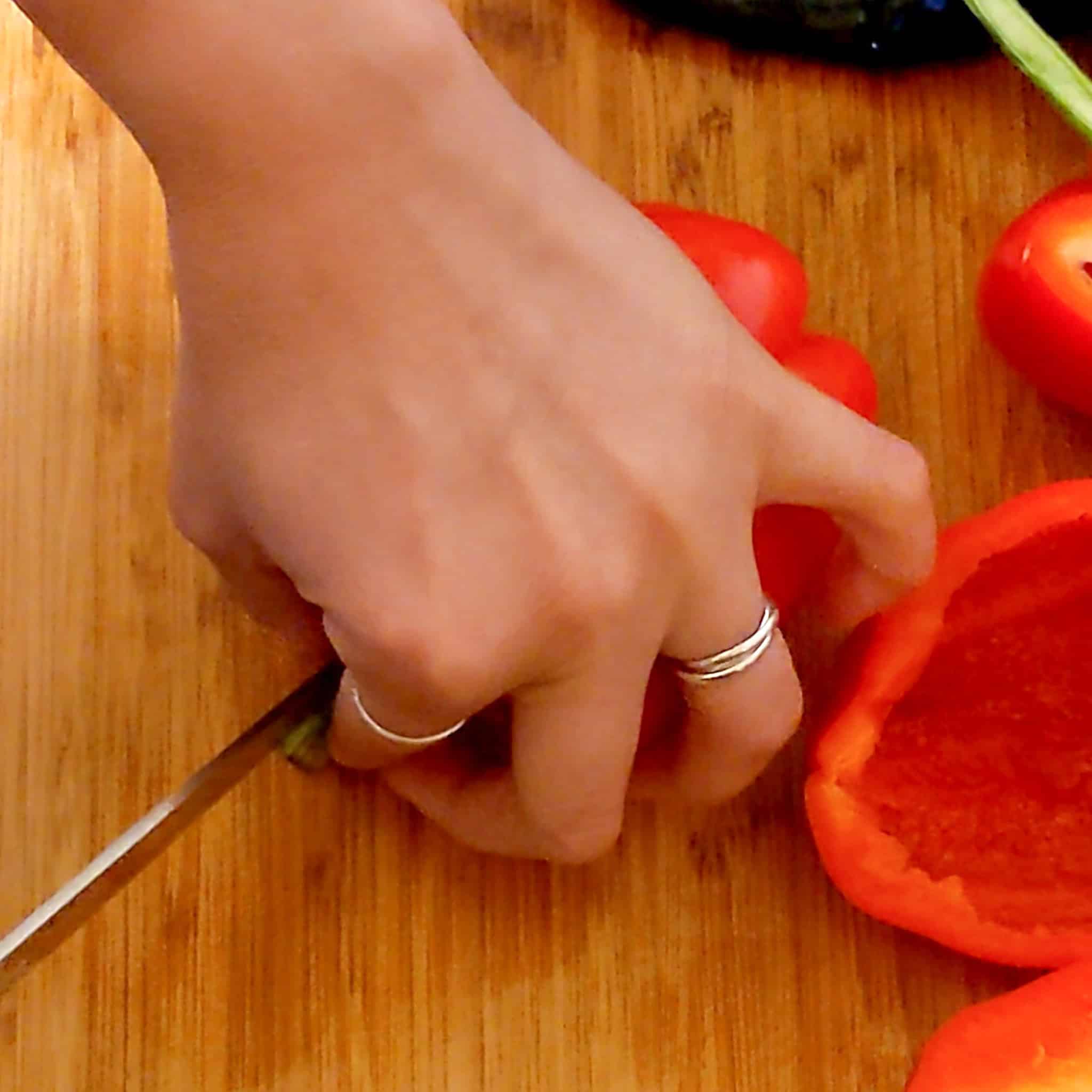
Cut through the base of the stem and continue to cut to split the stem in half.
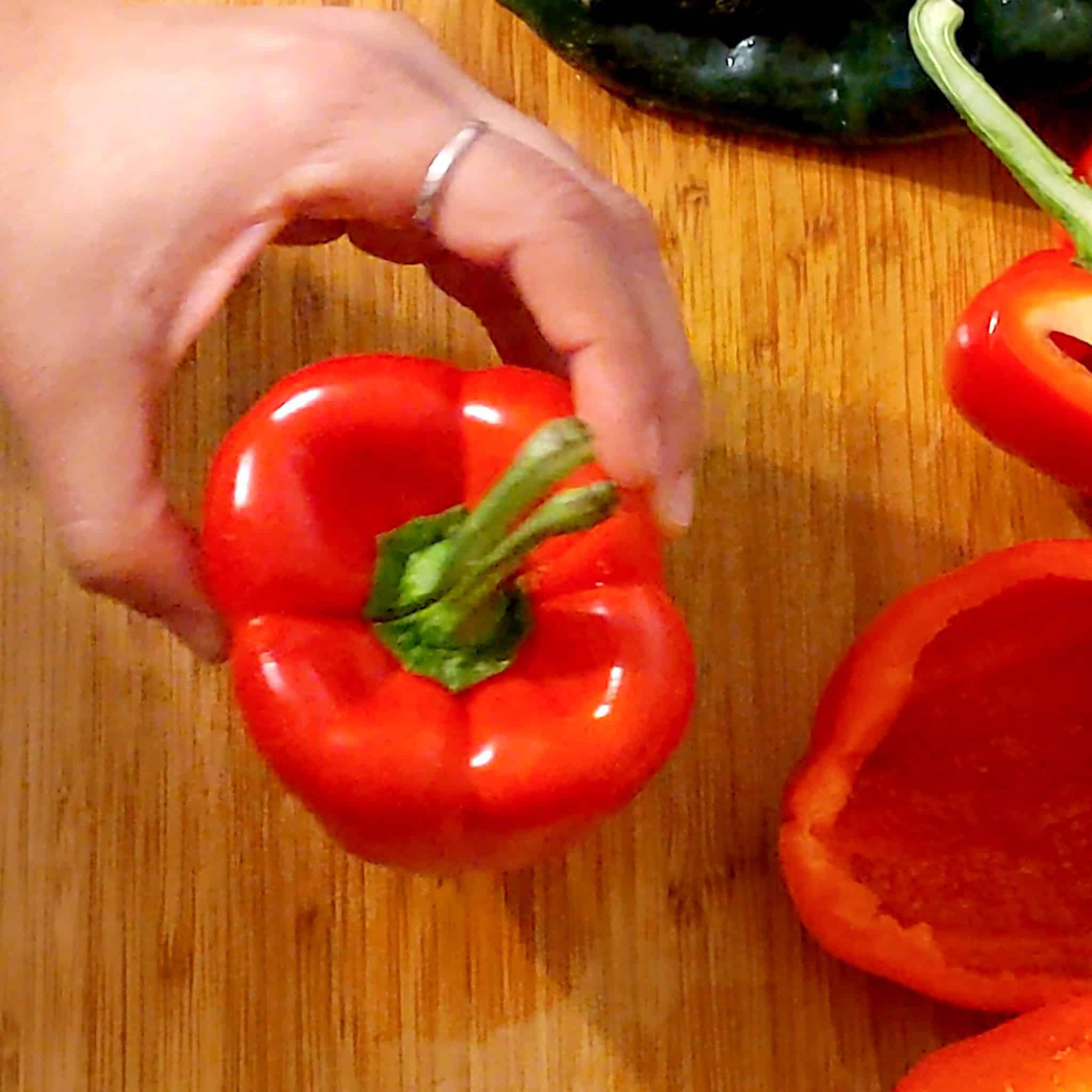
Stand the pepper upright.
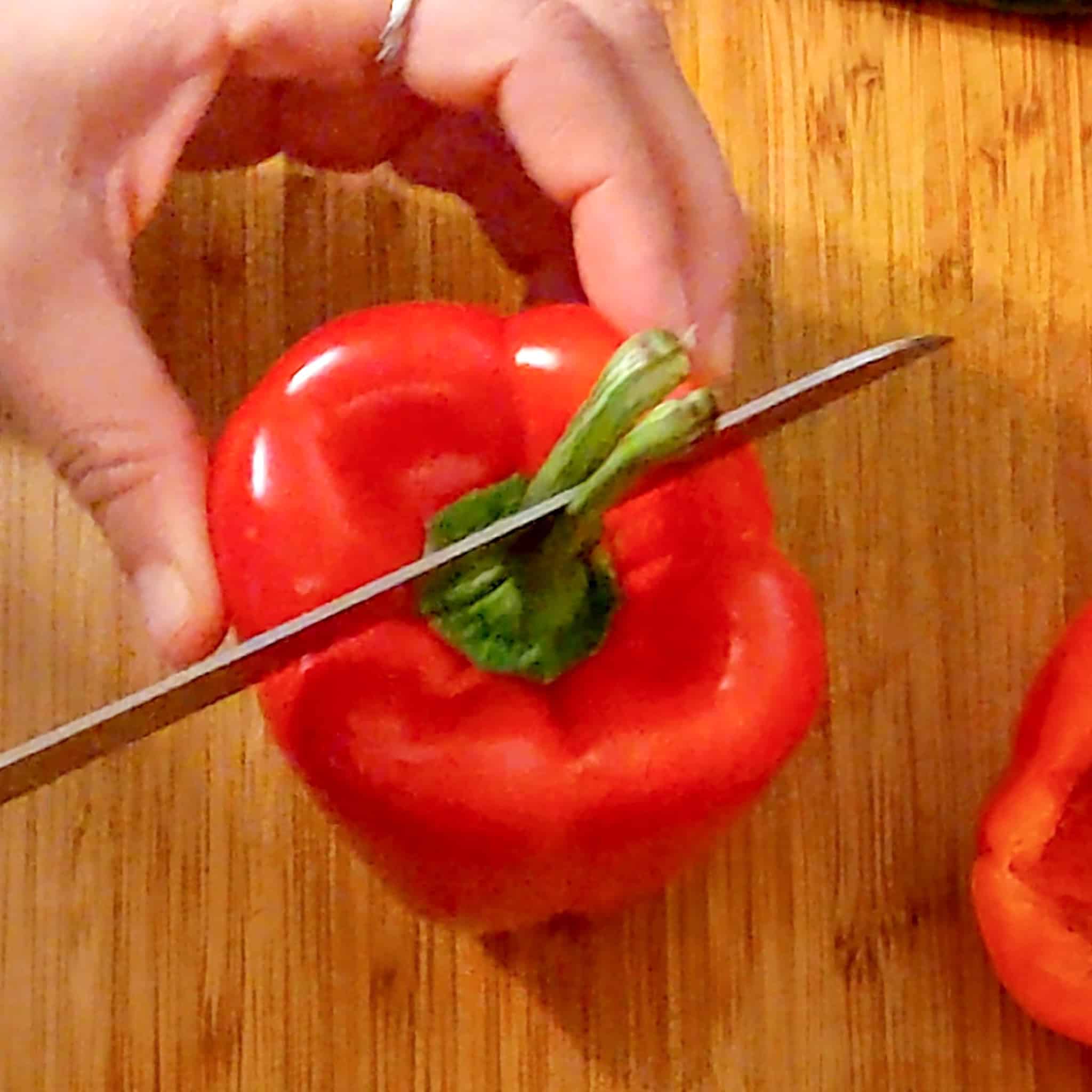
Return the knife to the base of the split stem.
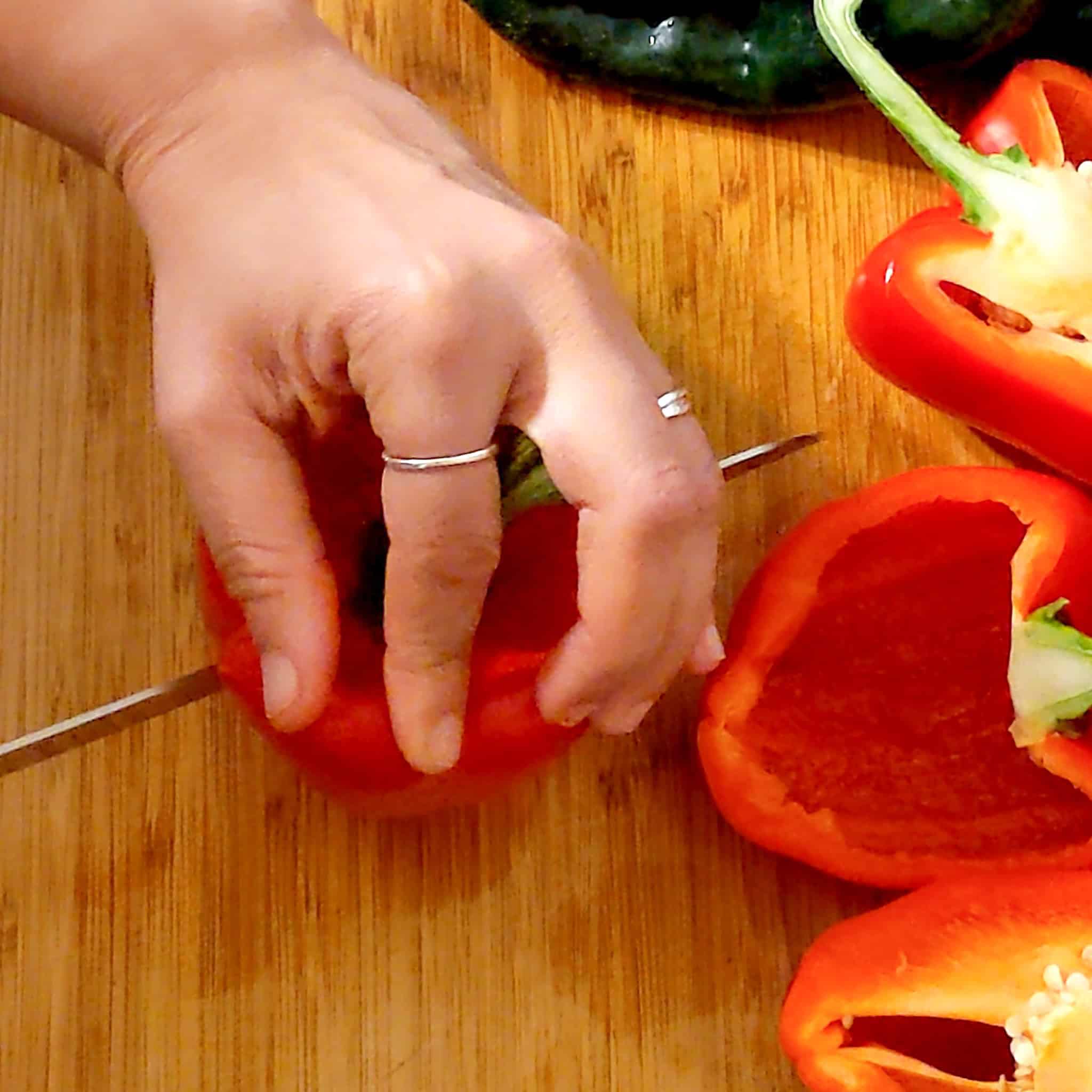
Cut the pepper completely in half.
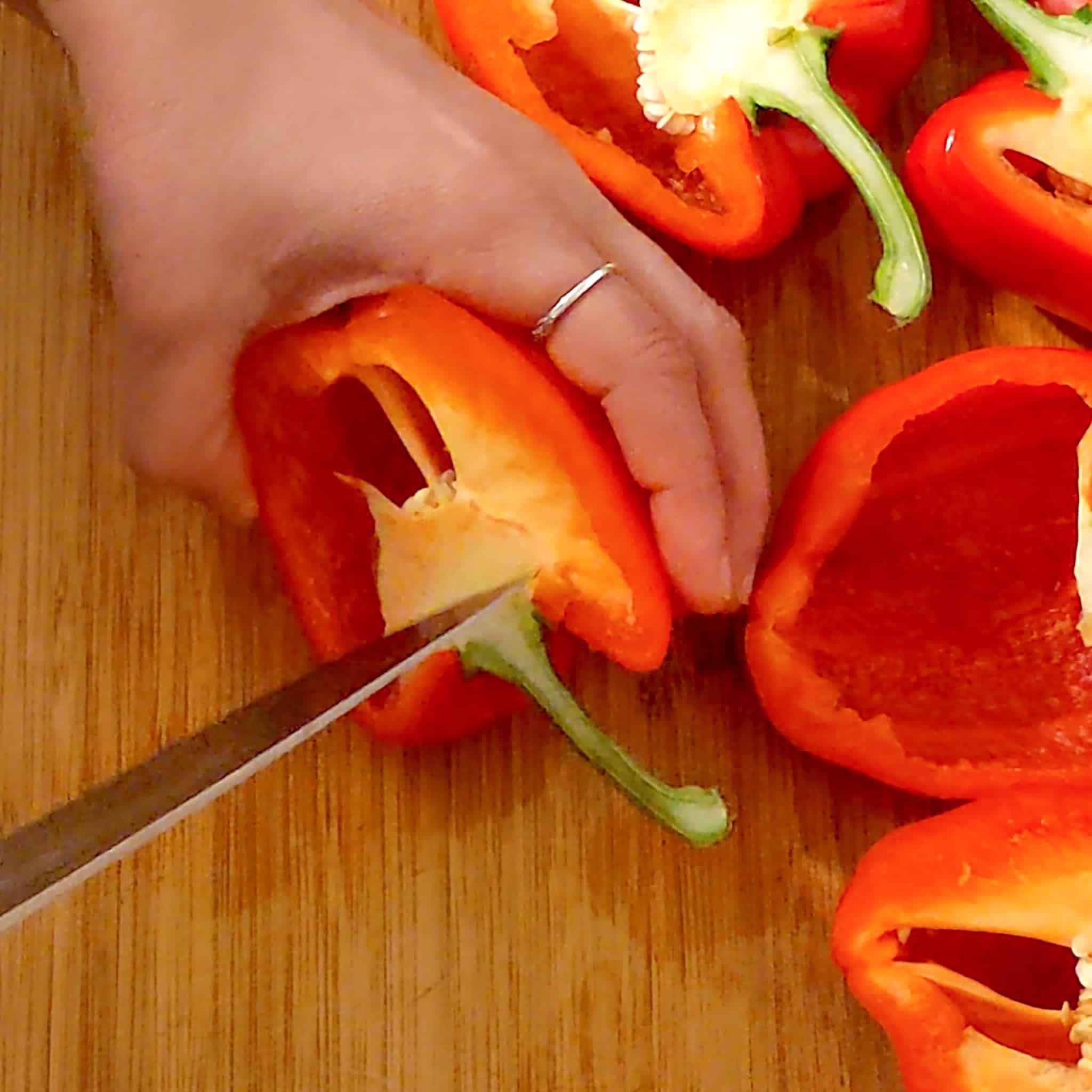
Using the tip of the knife, separate the core from the stem. A pairing knife will work as well.
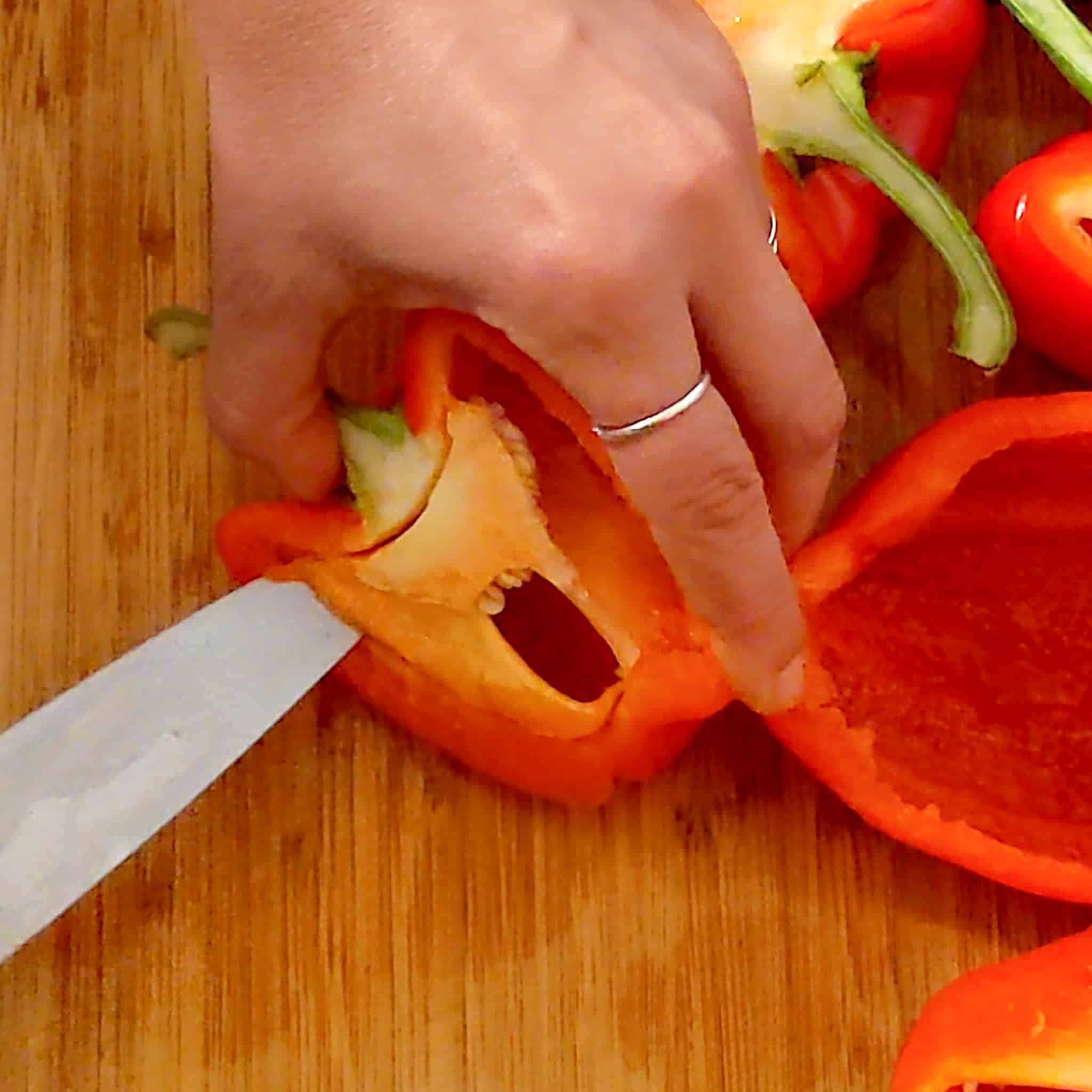
Separate the pith from the flesh.

What is a pairing knife? A paring knife is a small, versatile knife with a short, sharp blade, typically 2.5 to 4 inches long, designed for precision tasks like peeling, trimming, and slicing fruits and vegetables.
My Rating: ⭐⭐⭐⭐⭐
Purchased: November 9, 2023
My Review: As a professional chef and culinary instructor, I rely on quality knives both at home and in my cooking classes. After purchasing the PAUDIN Santoku Knife and loving its performance, I decided to invest in the 7-Piece Chef Knife Set—and I’m so glad I did! These knives are lightweight yet incredibly sharp, making prep work effortless whether I’m dicing, slicing, or chopping. The high-carbon stainless steel blades hold their edge well, and the Pakkawood handles offer a comfortable, balanced grip for extended use. I’ve used this set in my instruction classes and home kitchen, and it consistently delivers precision and ease. If you're looking for a reliable, professional-quality knife set without breaking the bank, PAUDIN is a fantastic choice! I highly recommend it for home cooks and professionals alike!
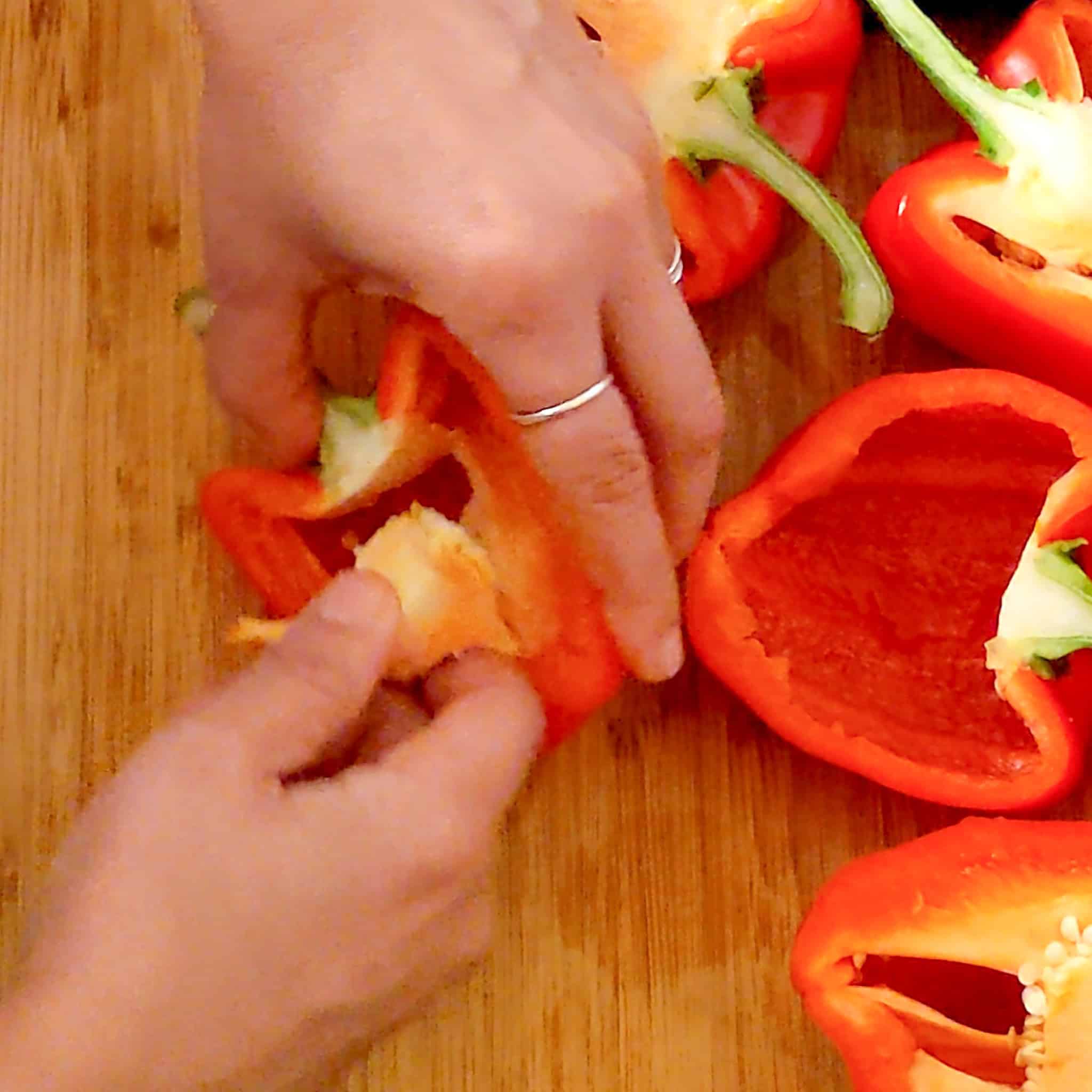
Remove the separated core and pith with your fingers.
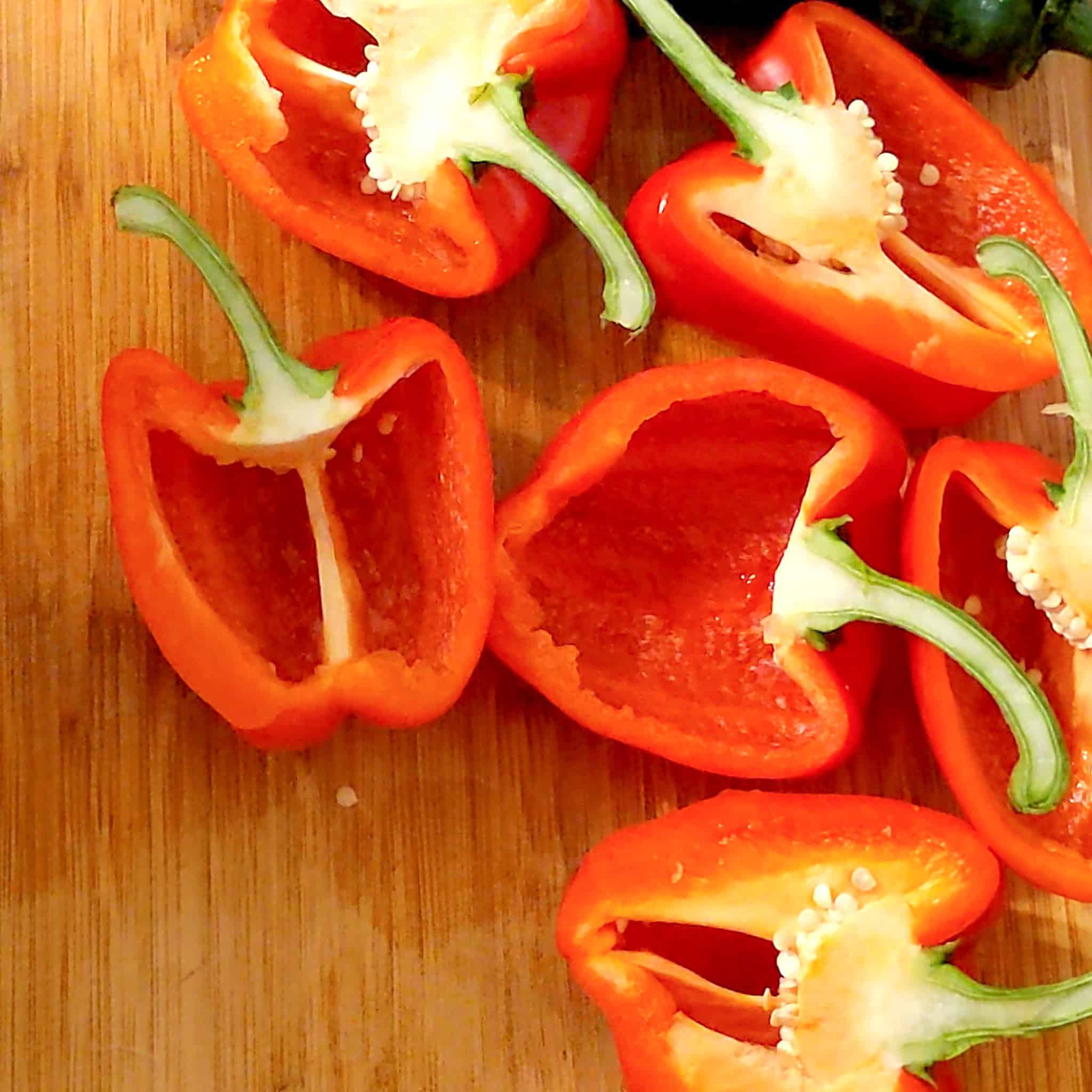
Rest the pepper with the cavity facing you.
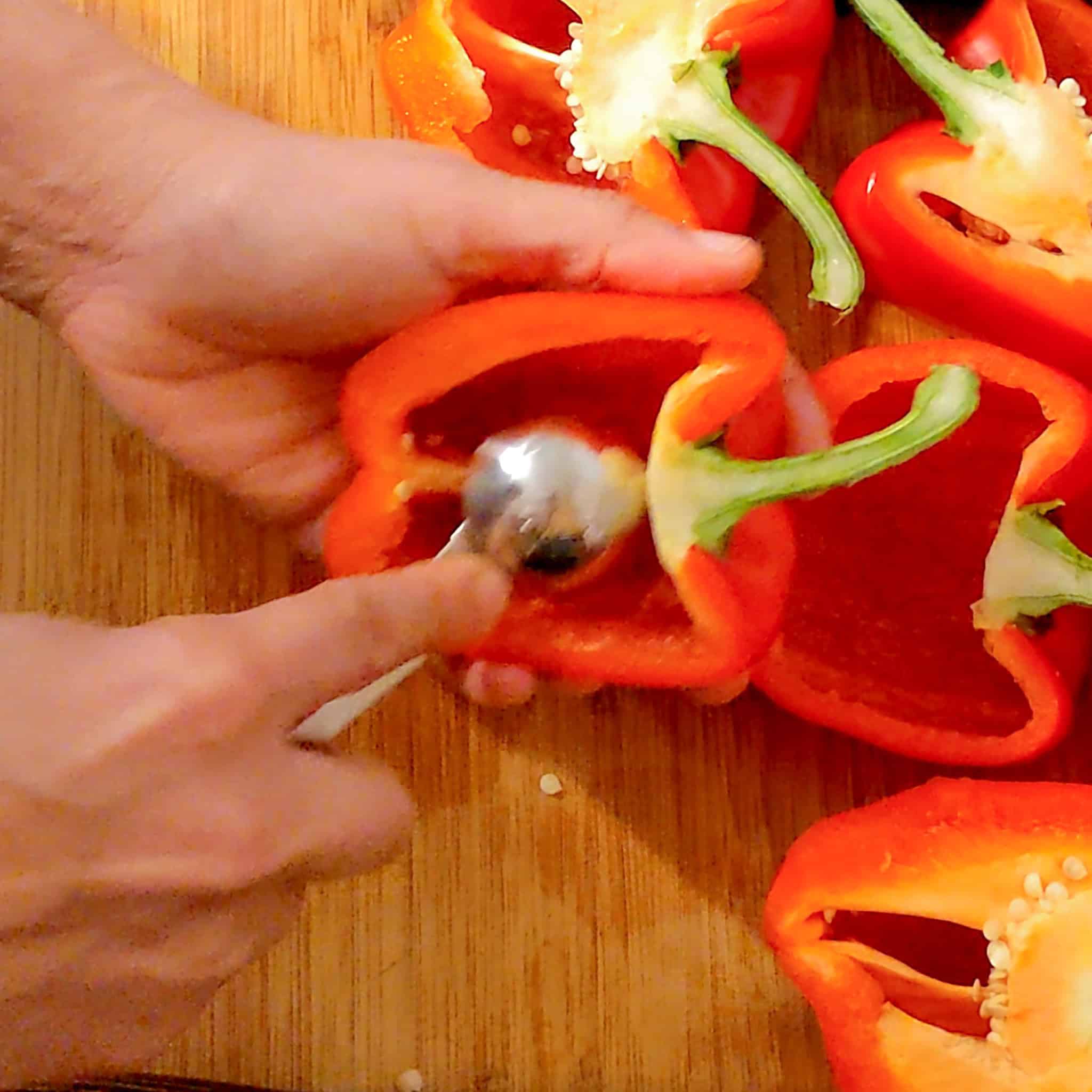
Use a spoon or a measuring spoon to scoop out the remaining pith.
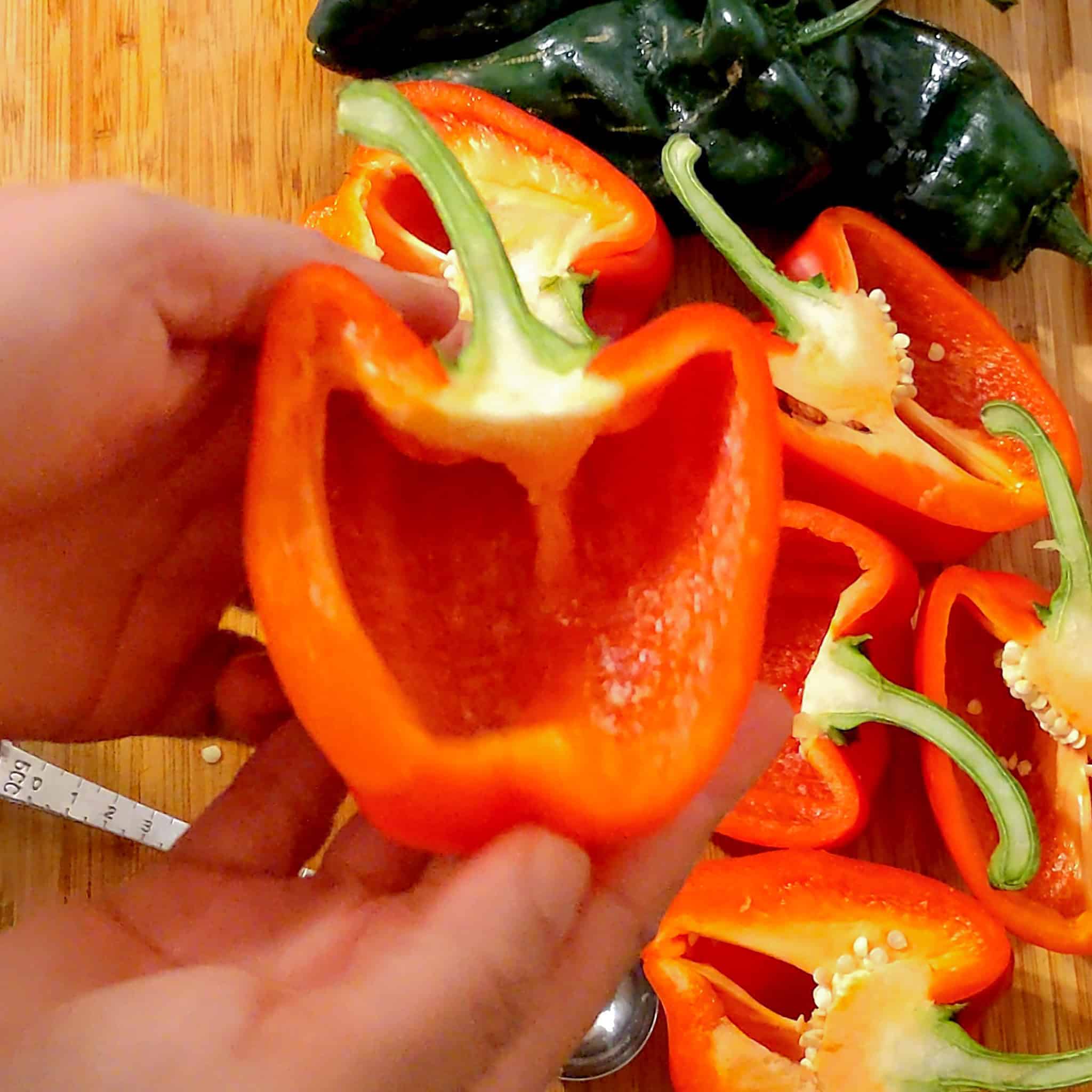
Now, the pepper is ready for stuffing.

What is the pith? The pith of bell pepper is the white, spongy interior membrane that connects the seeds to the walls of the pepper, often removed because it can taste slightly bitter.
How to Large Dice (Video)
Dicing bell peppers is a fundamental skill that can elevate your culinary creations. Large dicing involves cutting the pepper into uniform, approximately ¾-inch square pieces, ideal for dishes where a chunkier texture is desired, such as stir-fries, kebabs, or hearty stews.
Step-by-Step Guide
- Wash and Prepare: Thoroughly rinse the bell pepper under cool water to remove any dirt or residues. Pat it dry with a clean towel.
- Remove the Top and Bottom: Place the pepper on a cutting board and slice off the top (stem end) and bottom to create flat surfaces, making it stable for the next steps.
- Core the Pepper: Stand the pepper upright and make a vertical cut down one side. Open the pepper to reveal the inner core and seeds. Run your knife along the inside to remove the white membranes and seeds, ensuring a clean interior.
- Flatten and Slice: Lay the pepper flat on the cutting board, skin side down. Slice it into strips approximately ¾-inch wide.
- Dice into Large Pieces: Rotate the strips 90 degrees and cut across them at ¾-inch intervals to create uniform, large dice pieces.
Recipe Ideas
- Surprisingly High-Protein Meals Using Beans or Ground Turkey!
- Finger-Licking Chicken Wing Recipes You’ll Crave All Year
- Mango Coconut Felato | Ninja Creami Gelato-Style Treat
- Meal Plan of the Week: Brunch All Day Recipes to Kick Off Summer
Frequently Asked Questions
The easiest way to remove seeds is to cut off the top of the pepper where the stem is attached. This reveals the seed cluster, which can then be gently pulled out with your fingers or a small knife. Tapping the pepper upside down over a trash can or sink can help shake out any remaining seeds.
Yes, you can prep sweet peppers in advance. Store them in an airtight container or resealable plastic bag in the refrigerator, where they’ll stay fresh for 3-5 days. If you need to keep them longer, consider freezing them for future use.
To minimize waste, use the top-down method: after cutting off the top, use a knife to carefully cut around the core, staying as close to it as possible. This method preserves most of the pepper’s flesh while effectively removing the seeds and core.
For stir-frying, julienne or cut the peppers into thin strips. This size and shape allow them to cook quickly and evenly, blending well with other stir-fry ingredients. Ensure your knife is sharp for clean, precise cuts, which helps maintain the peppers' texture during cooking.
Peppers can become slimy if stored with excess moisture. After washing, make sure to thoroughly dry the peppers before storing them. Also, storing them in an airtight container with a paper towel can help absorb any additional moisture, keeping the peppers fresher for longer.
Essentials of Learning How to Prep
Learning how to prep sweet peppers can greatly enhance your culinary experience. By selecting the freshest peppers efficiently, washing, deseeding, and slicing them, you ensure that every dish benefits from their vibrant flavor and texture.
Keep Practicing and Explore
I encourage you to practice the techniques shared in this post to become more confident and skilled in working with sweet peppers. The more you experiment, the more you'll discover how versatile and rewarding this ingredient can be in your cooking.
Don't forget to explore more of my blog posts for additional recipes, tips, and techniques that can help you elevate your culinary skills even further. If you haven’t already, I invite you to subscribe to my blog for future cooking tips and updates so you never miss out on new ways to enhance your kitchen experience.
Now It's Your Turn!
To enhance your experience with prepping sweet peppers, explore related posts on my blog, Just Maika Cooking.
- Check out the Cook’s Notebook section for detailed tips and techniques that complement your pepper prep skills.
- Dive into various recipes where you can apply your newfound pepper-prepping expertise, such as in stir-fries, salads, and stuffed pepper dishes.
- If you're looking to further expand your culinary skills, consider signing up for one of my cooking classes, where you'll learn hands-on techniques for using sweet peppers and other versatile ingredients in your everyday cooking.
Questions and Comments
Do you have sweet pepper prep tips or a favorite recipe featuring sweet peppers? Share your tips and recipes in the comments below—I’m always excited to learn new techniques and get inspired by your creations!


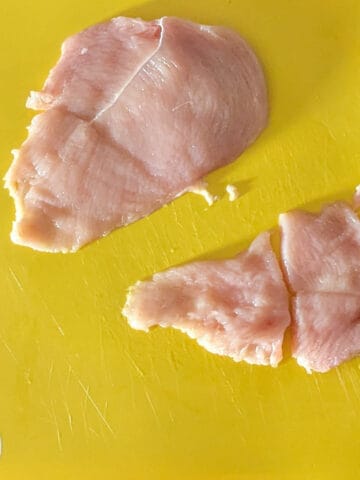

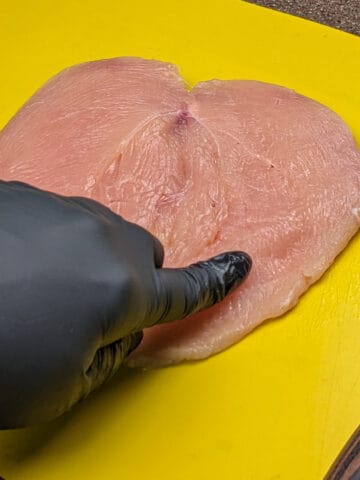
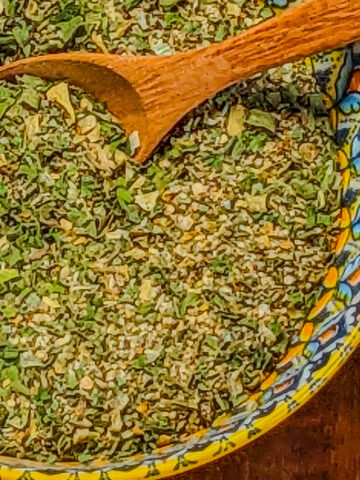



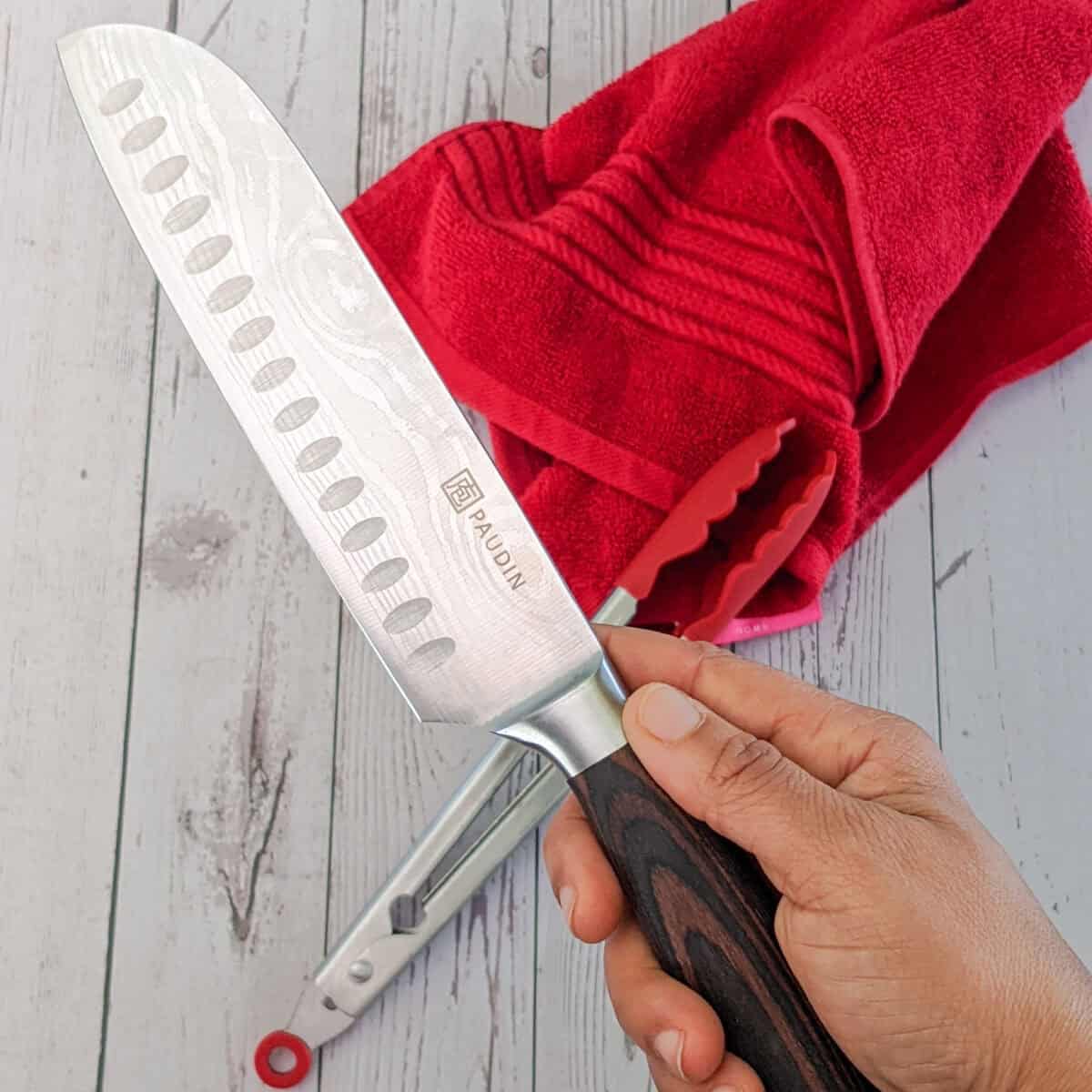
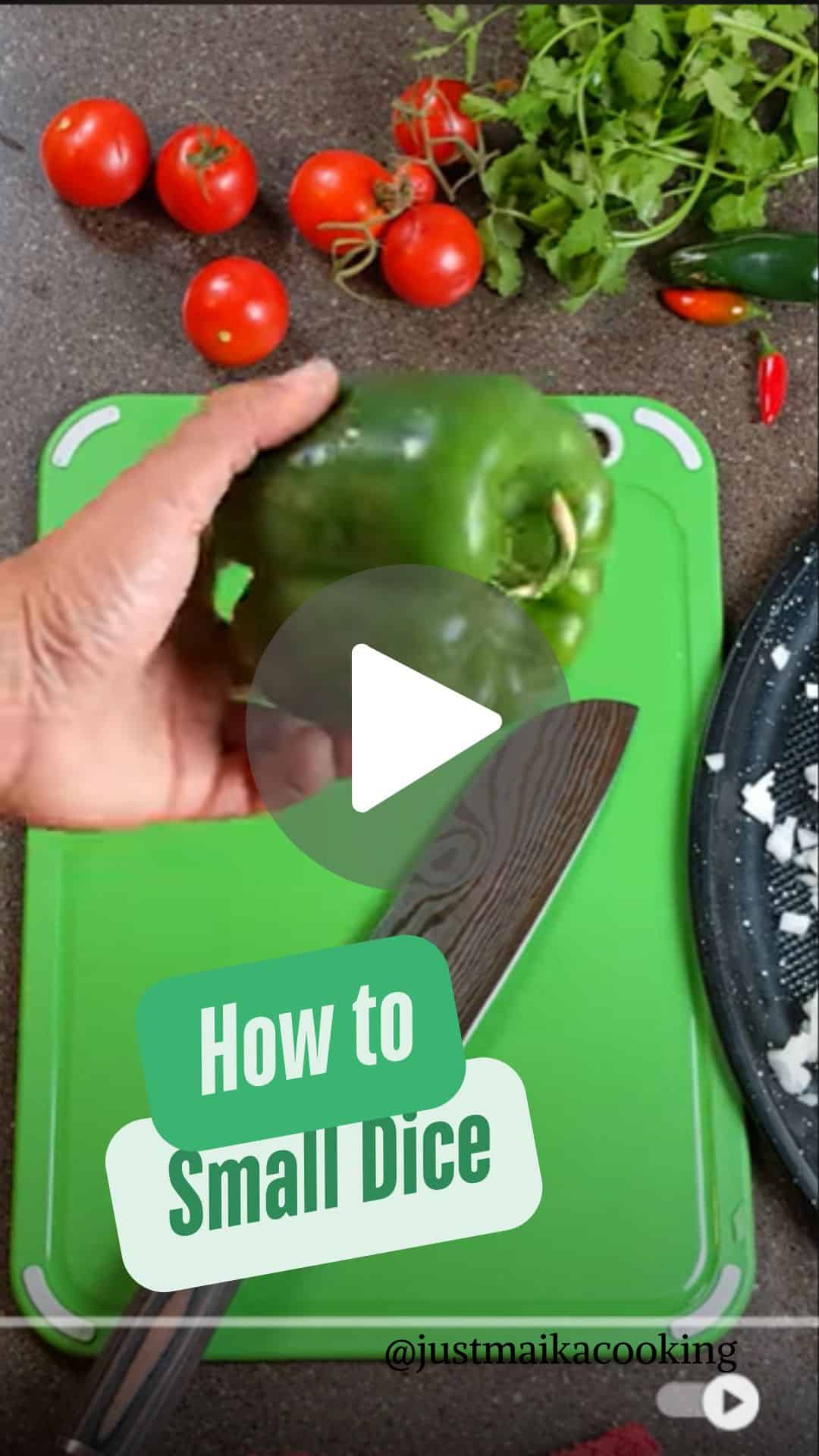

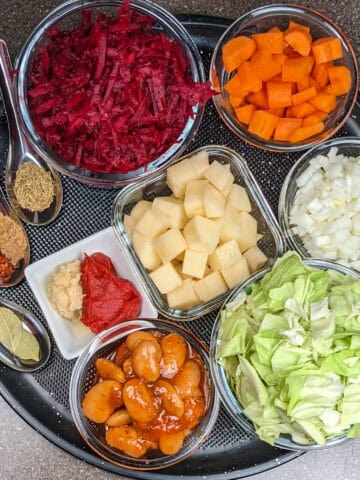
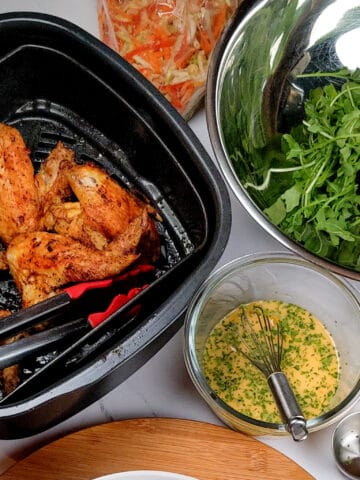

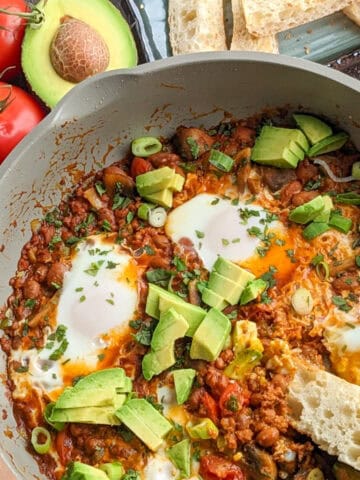

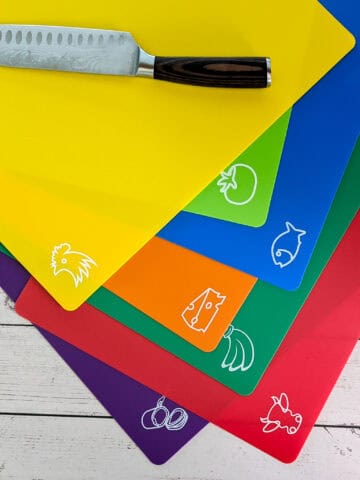
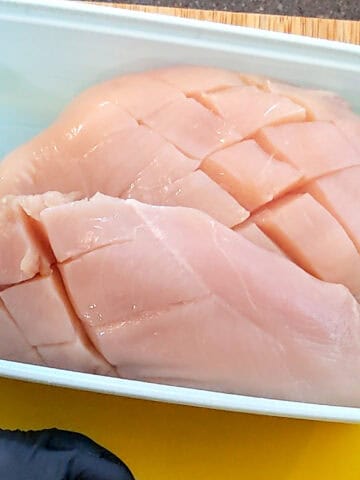
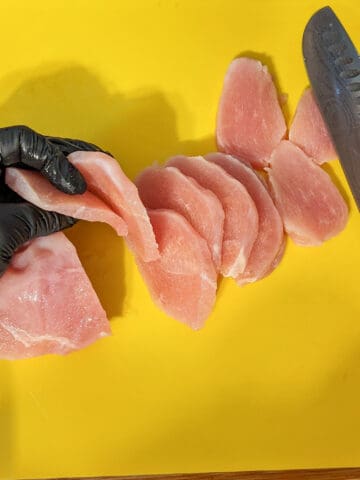
Leave a Reply